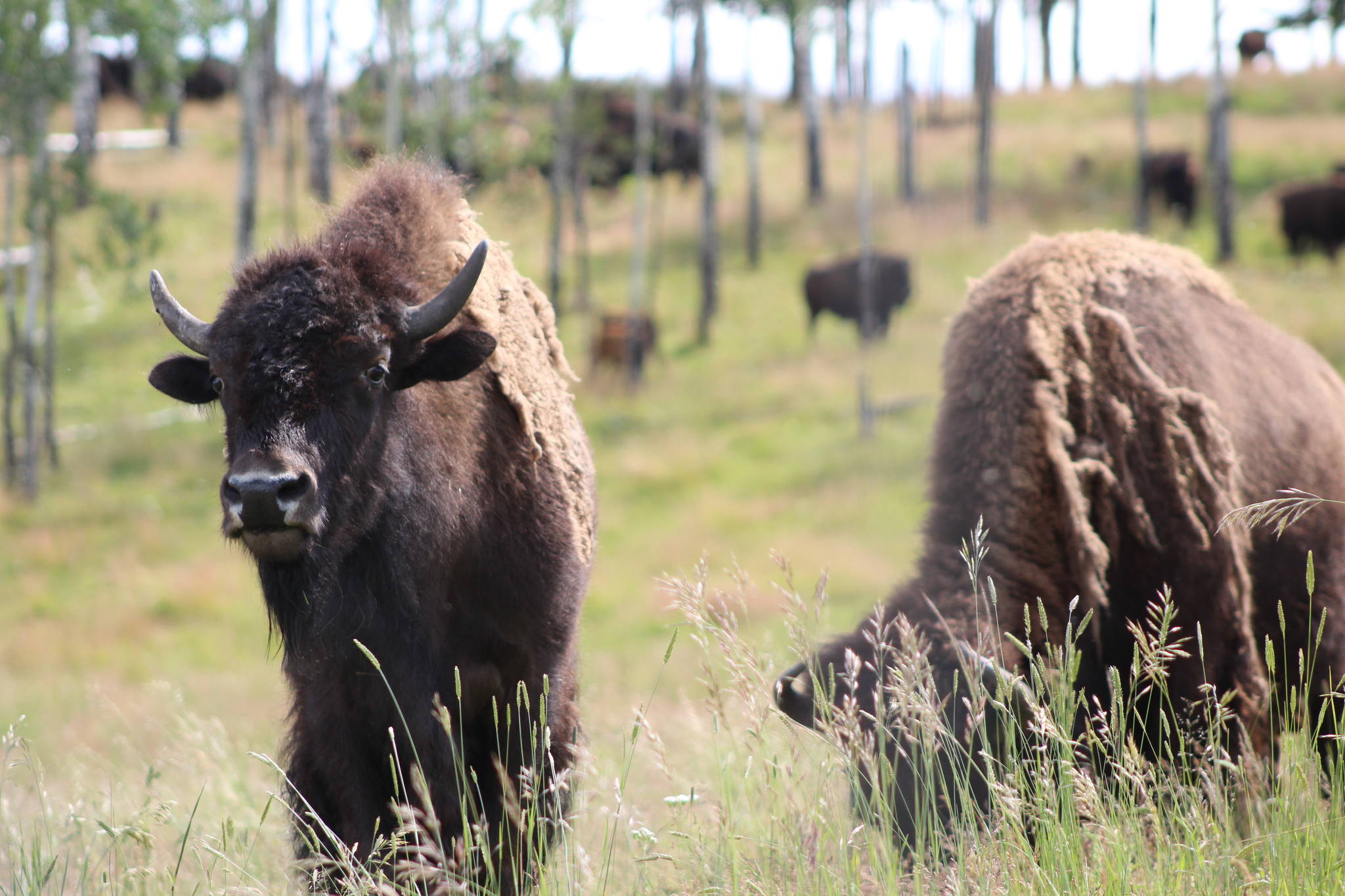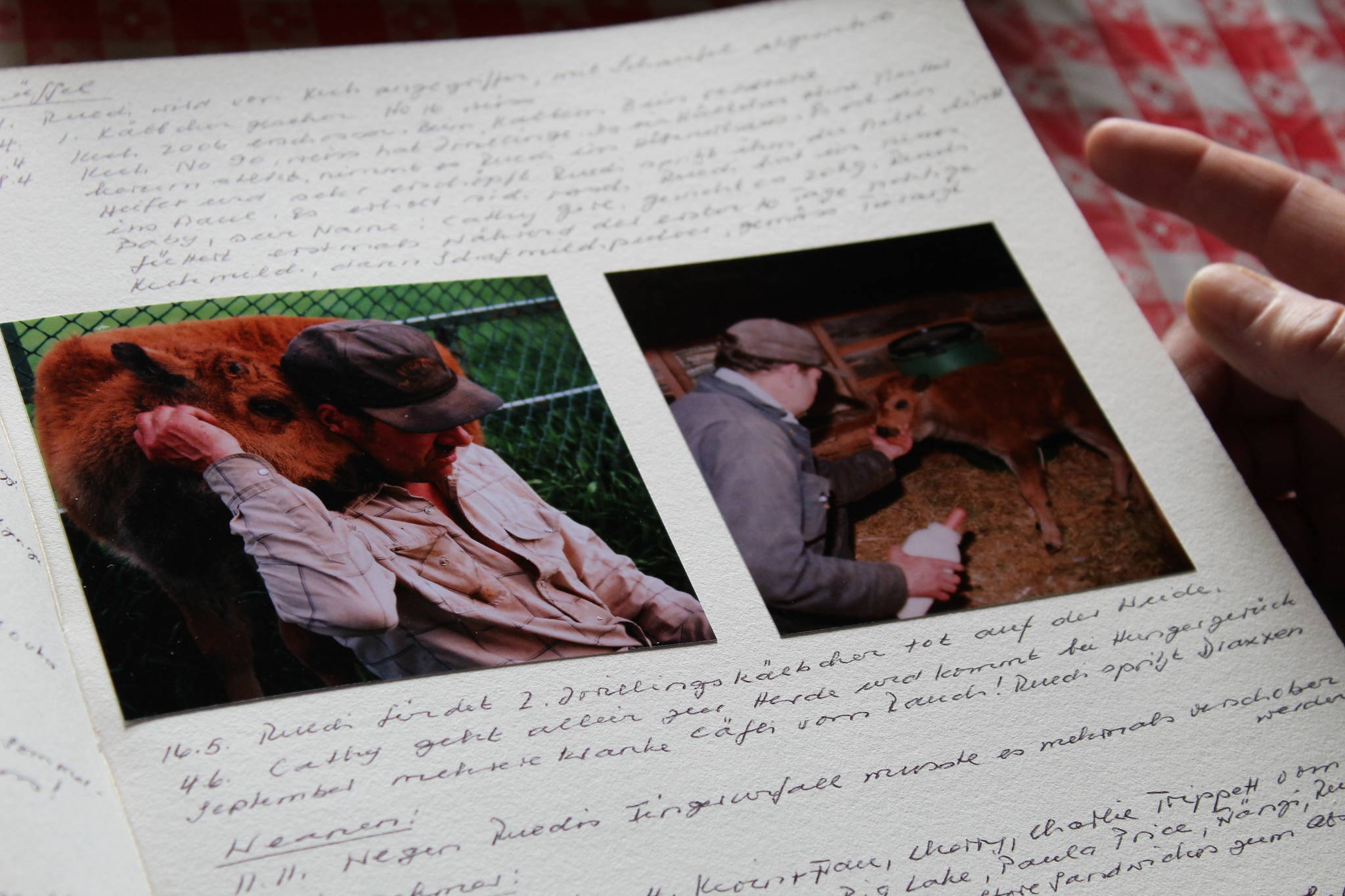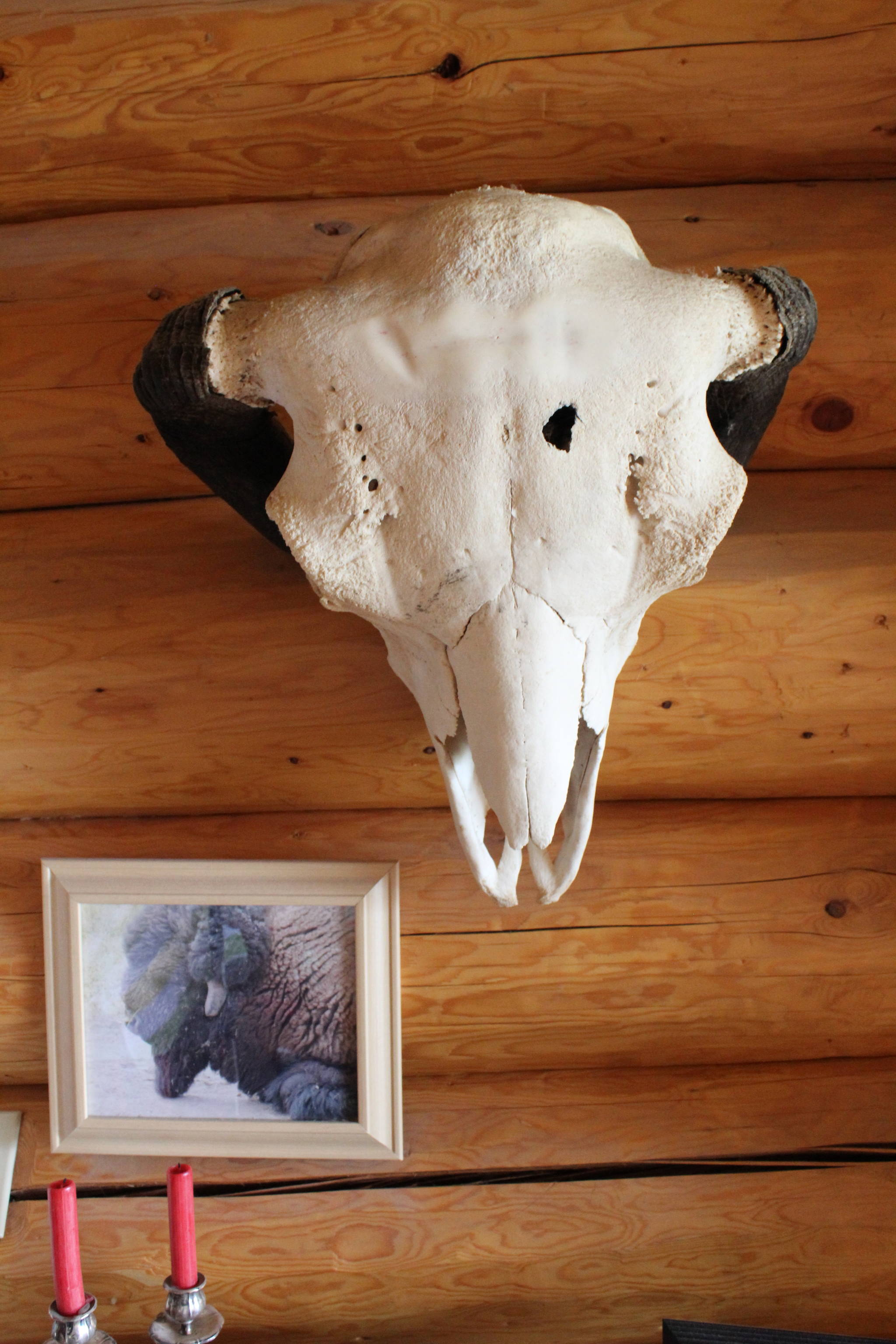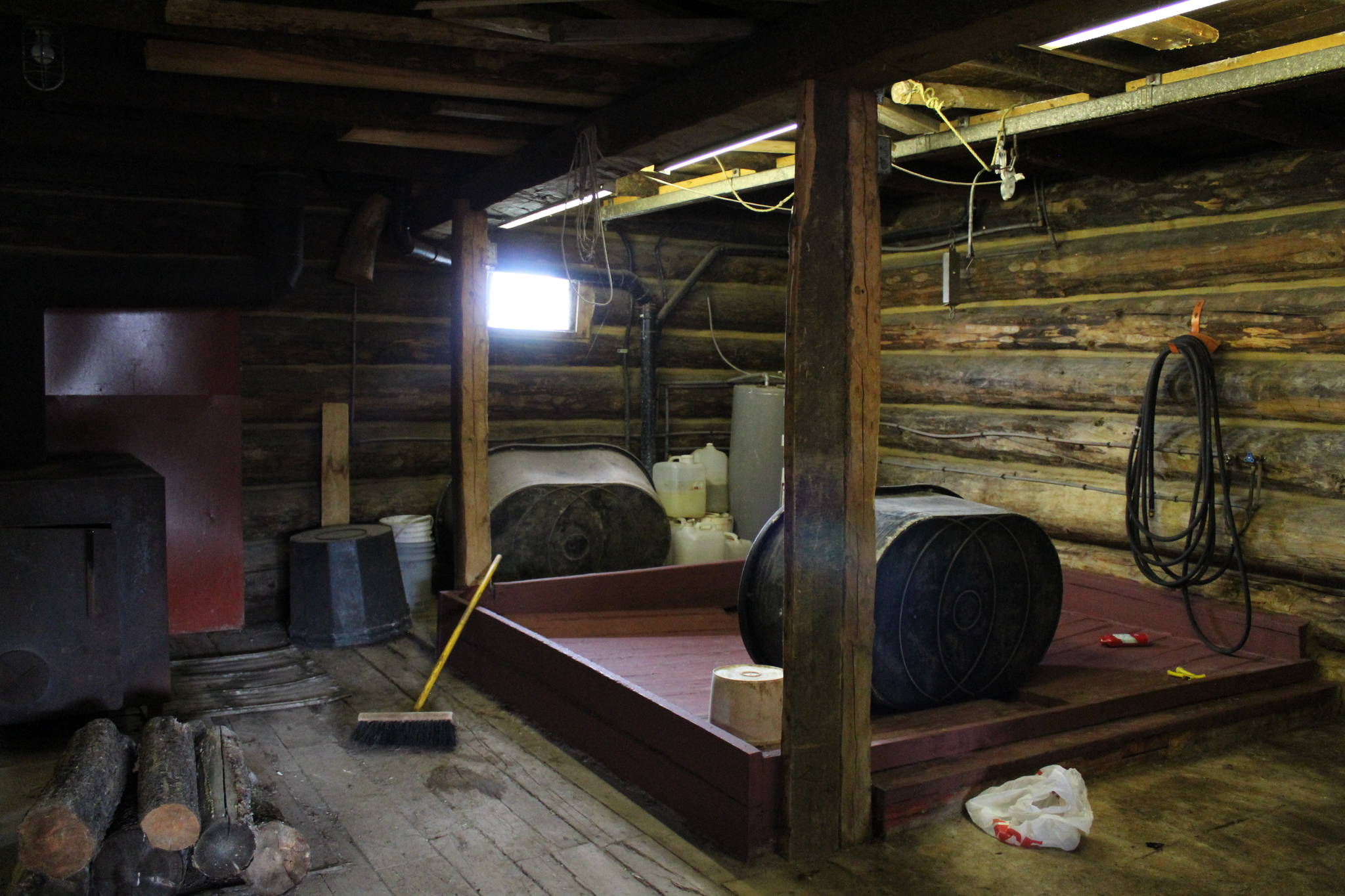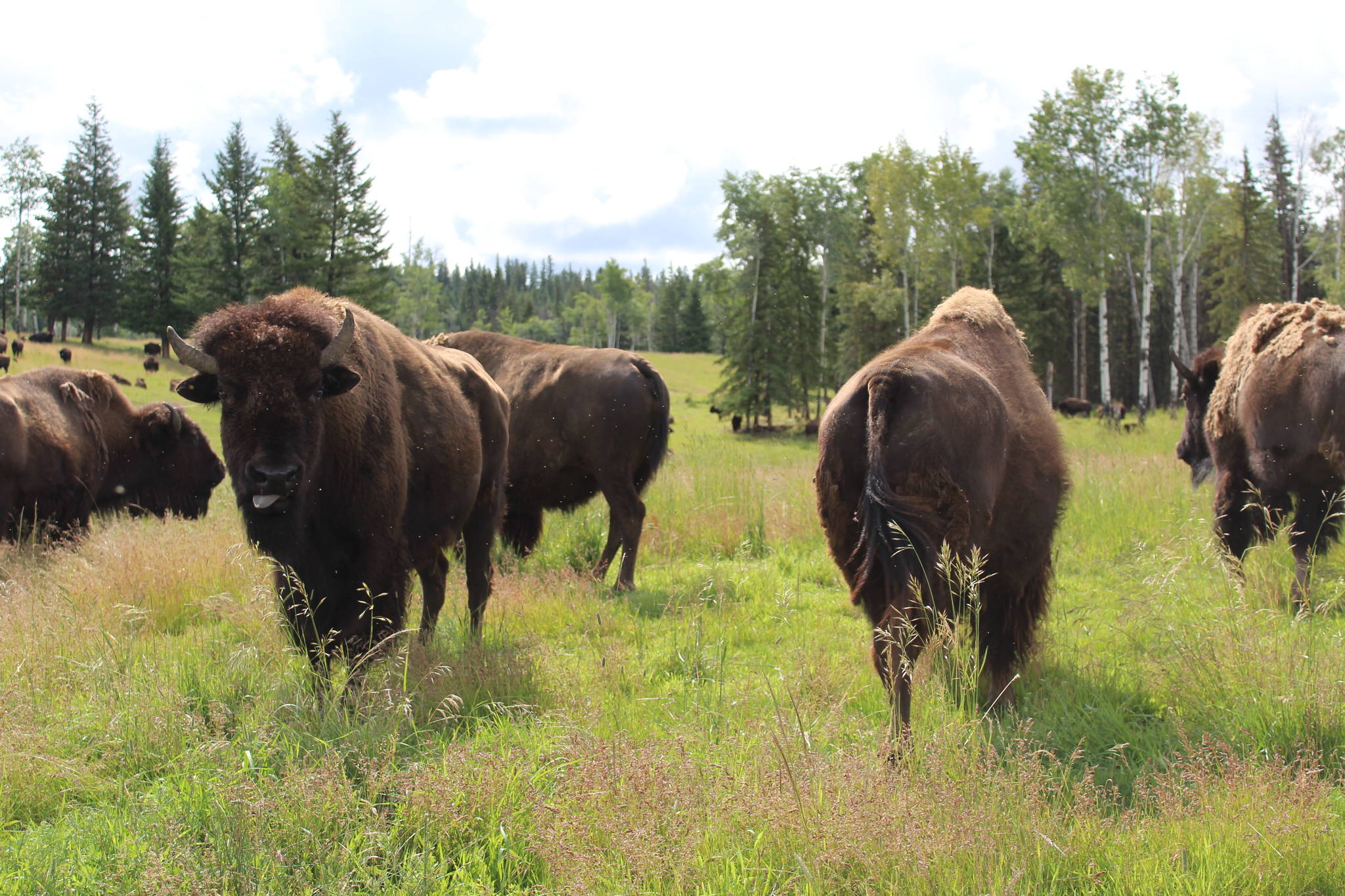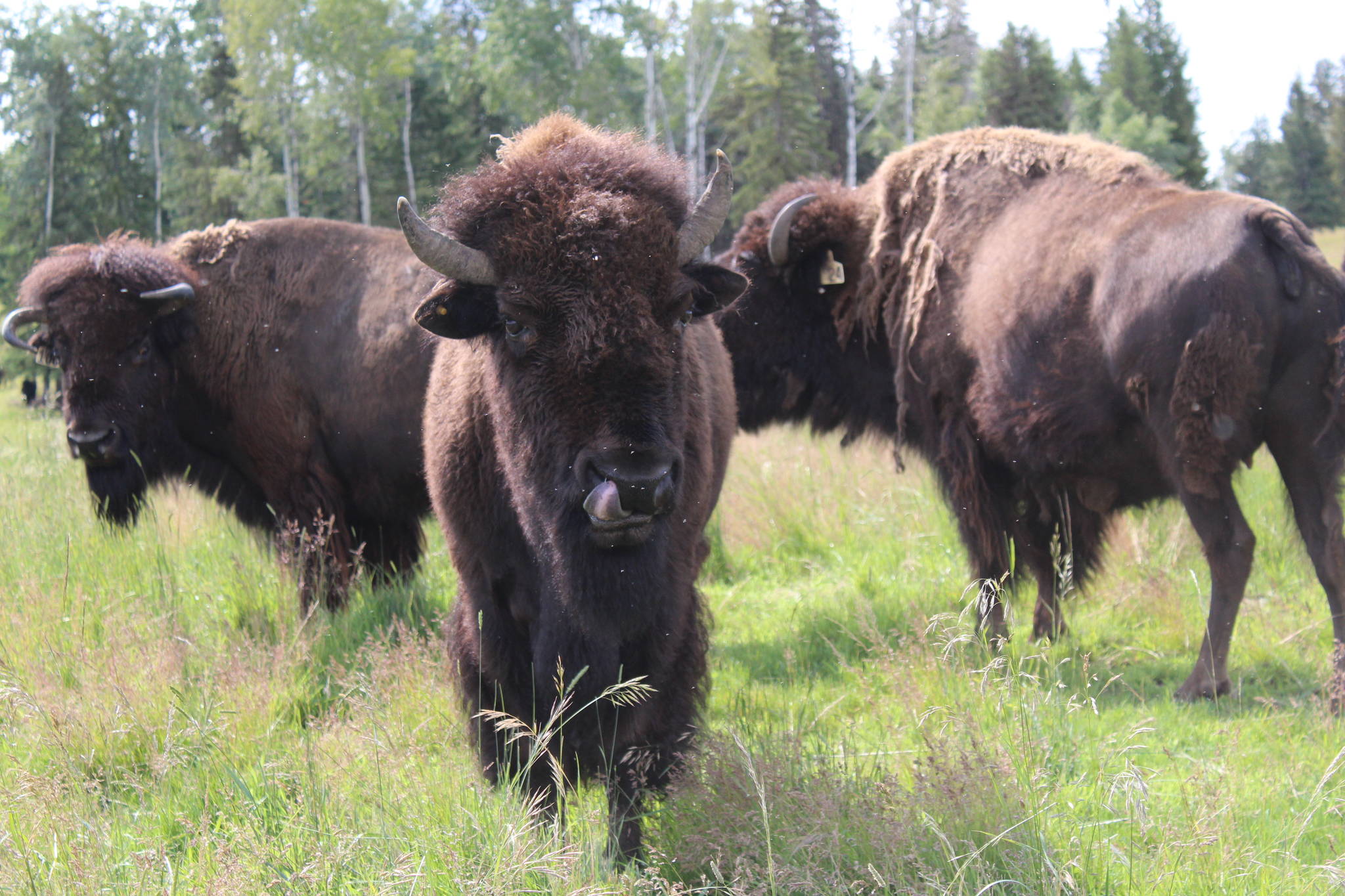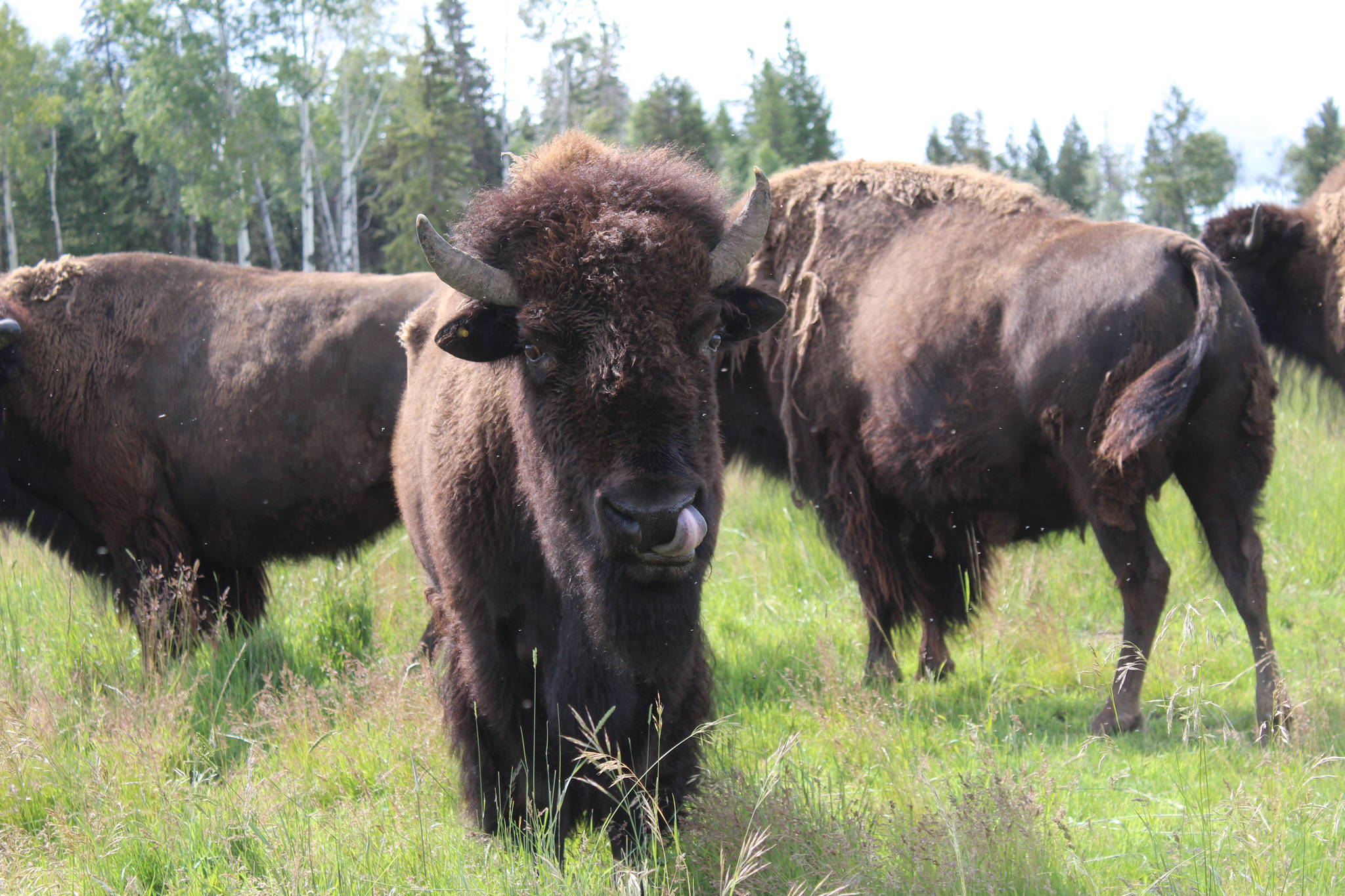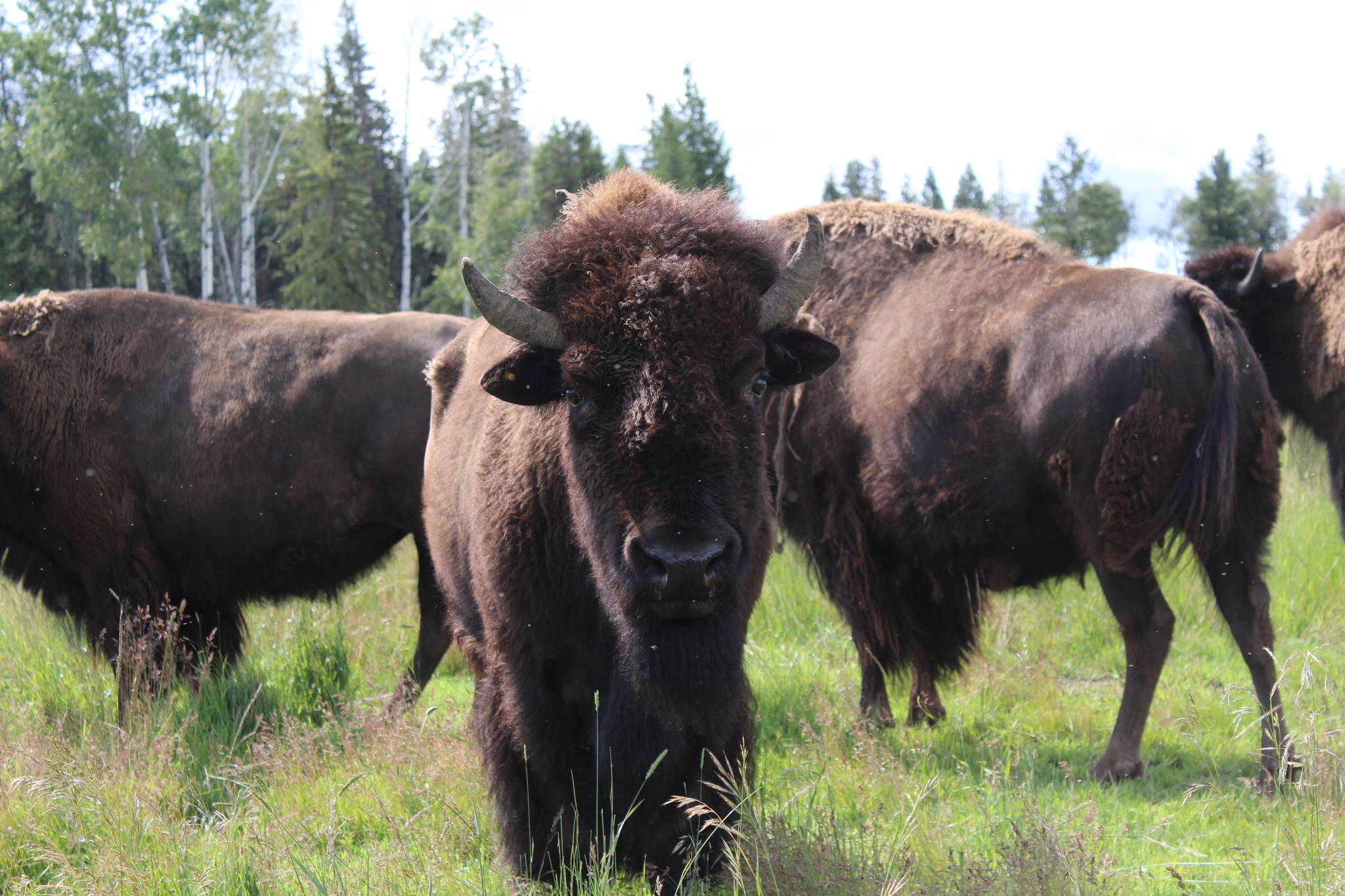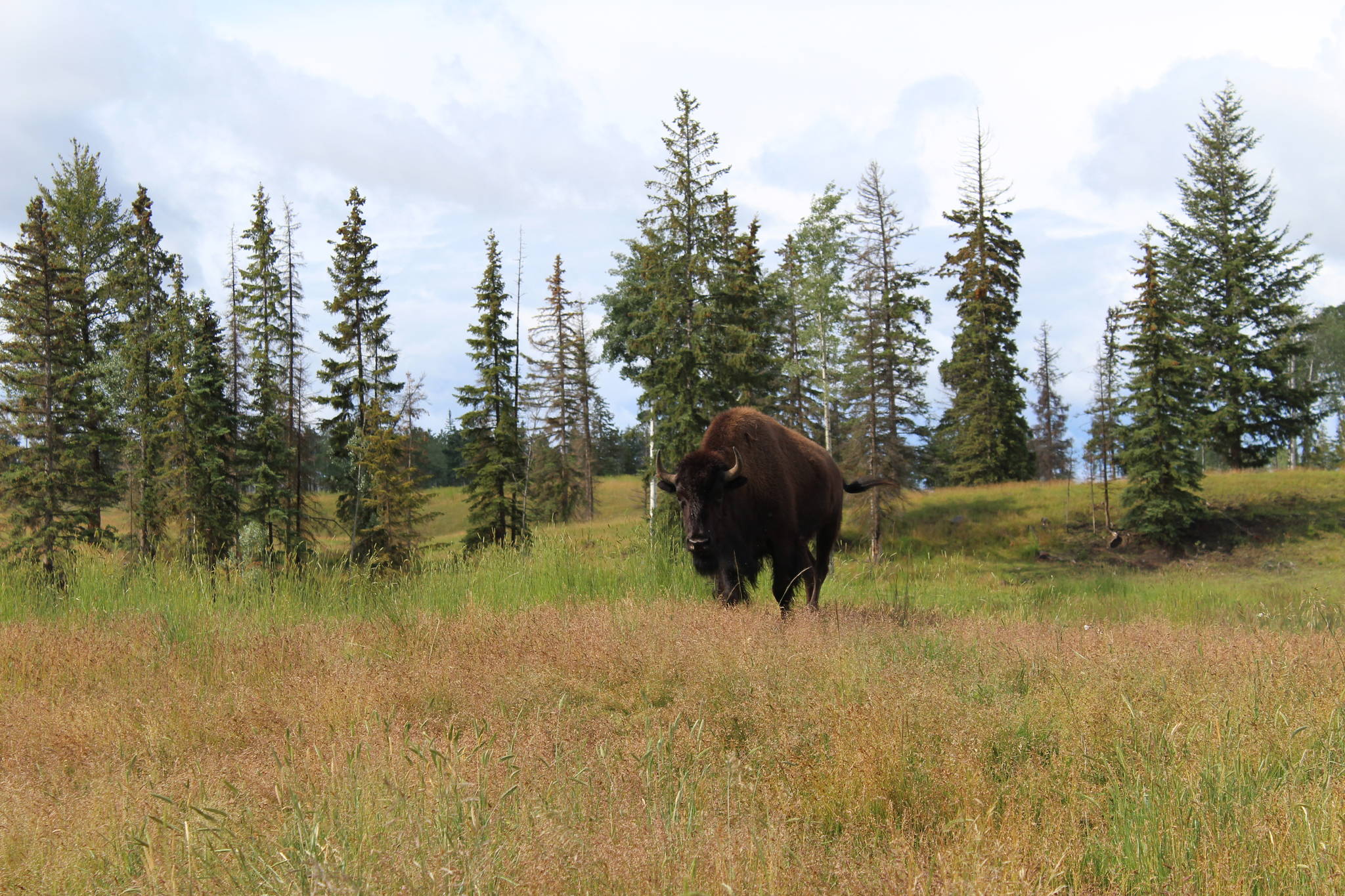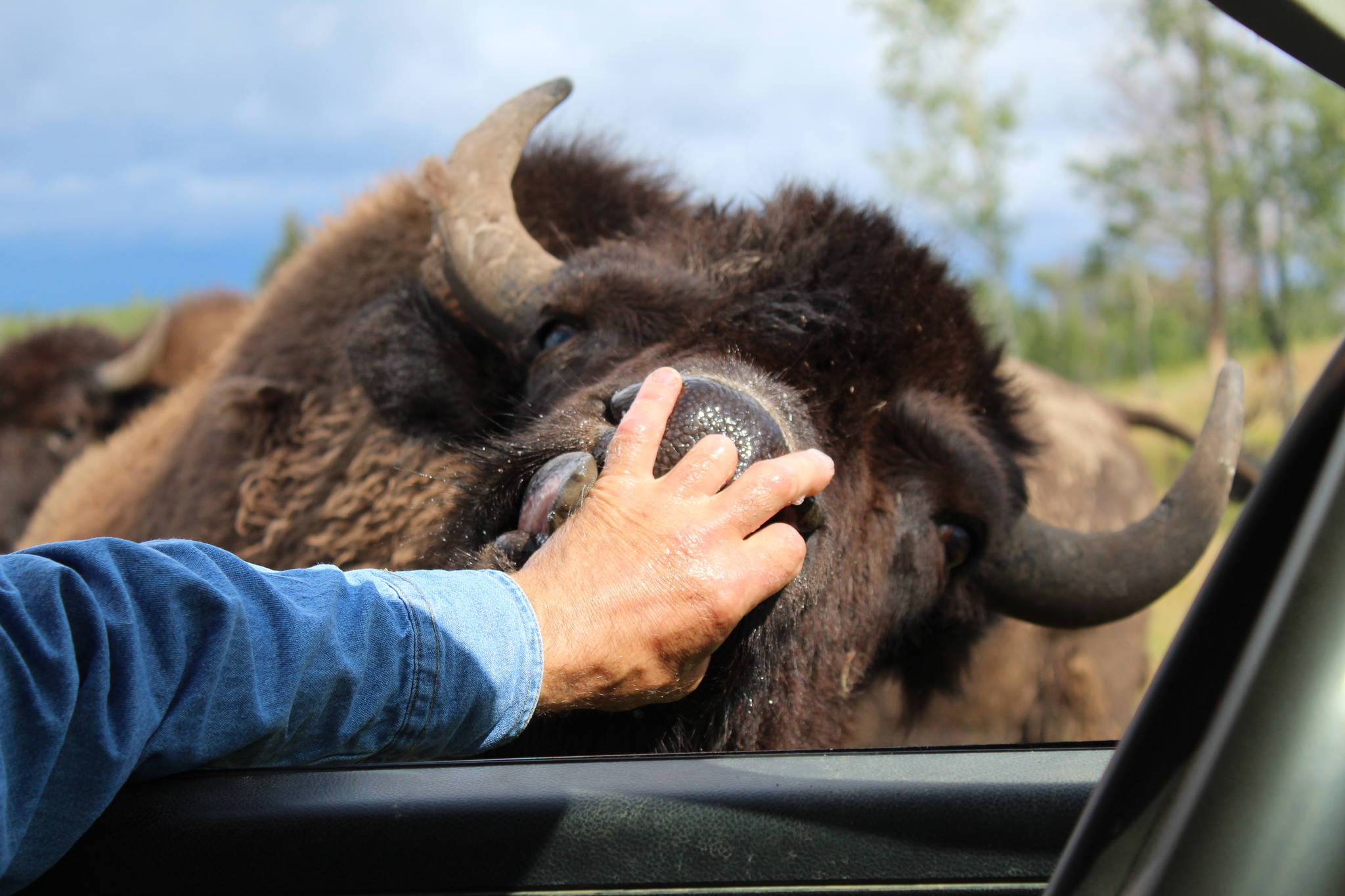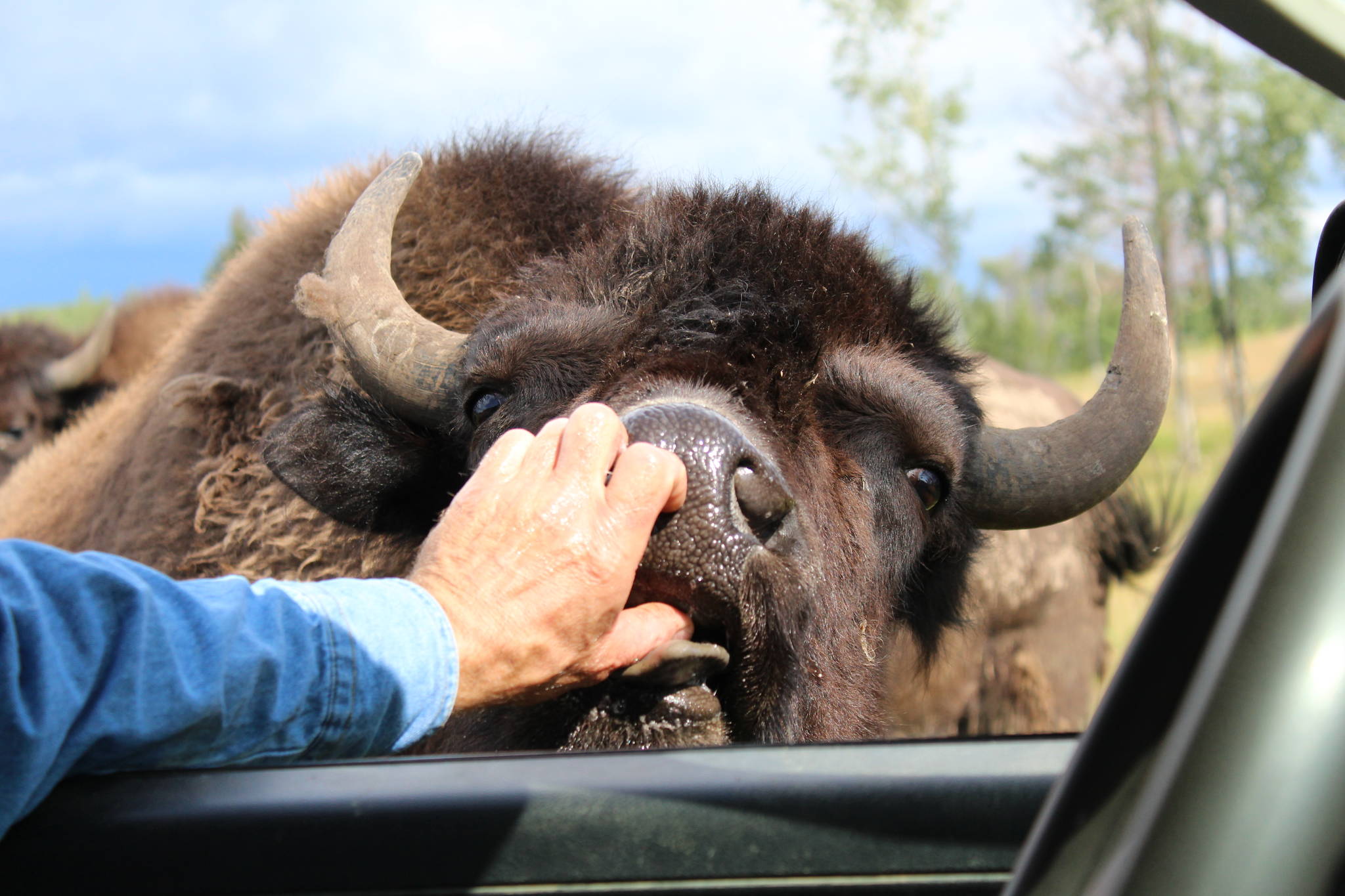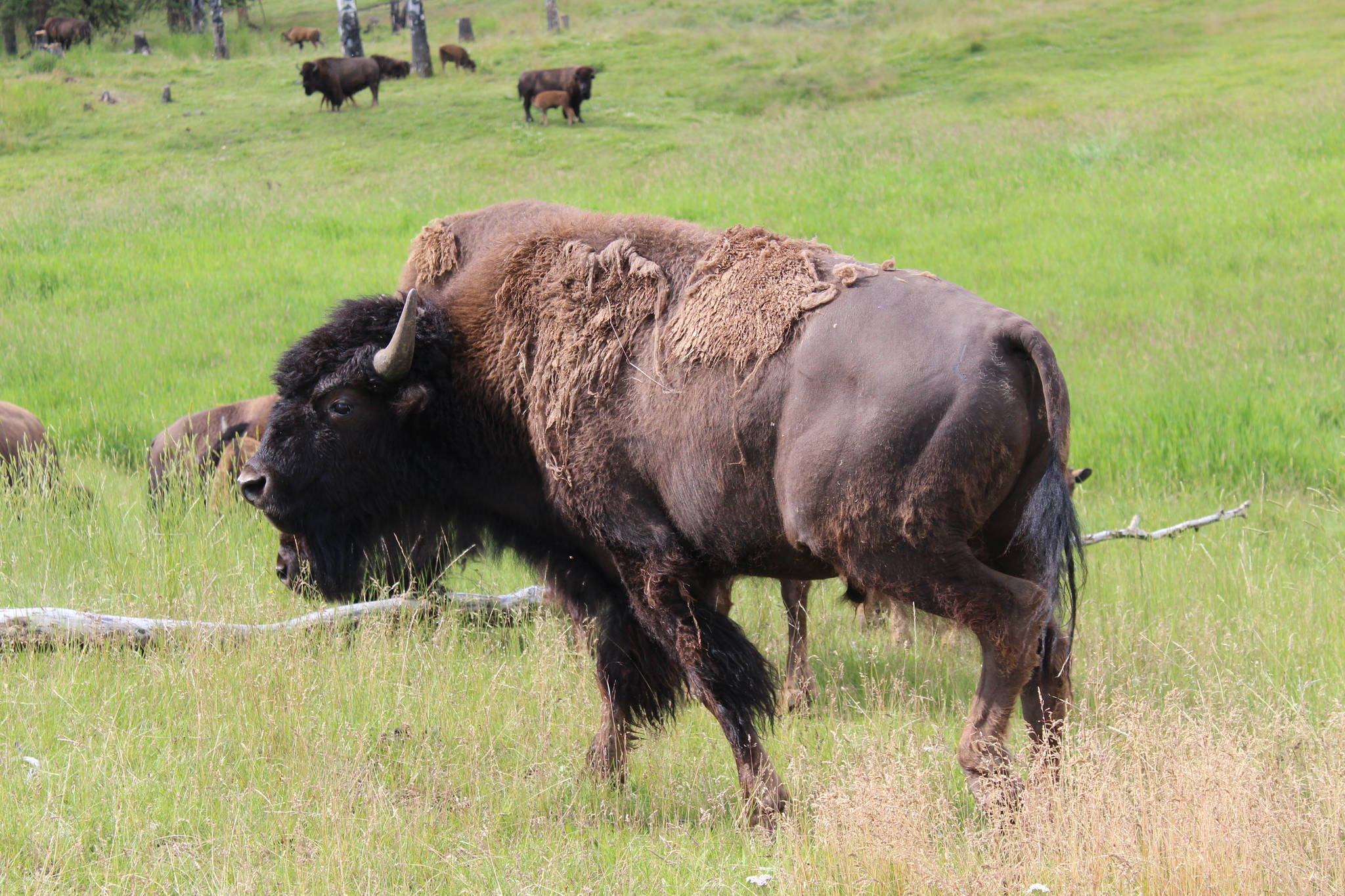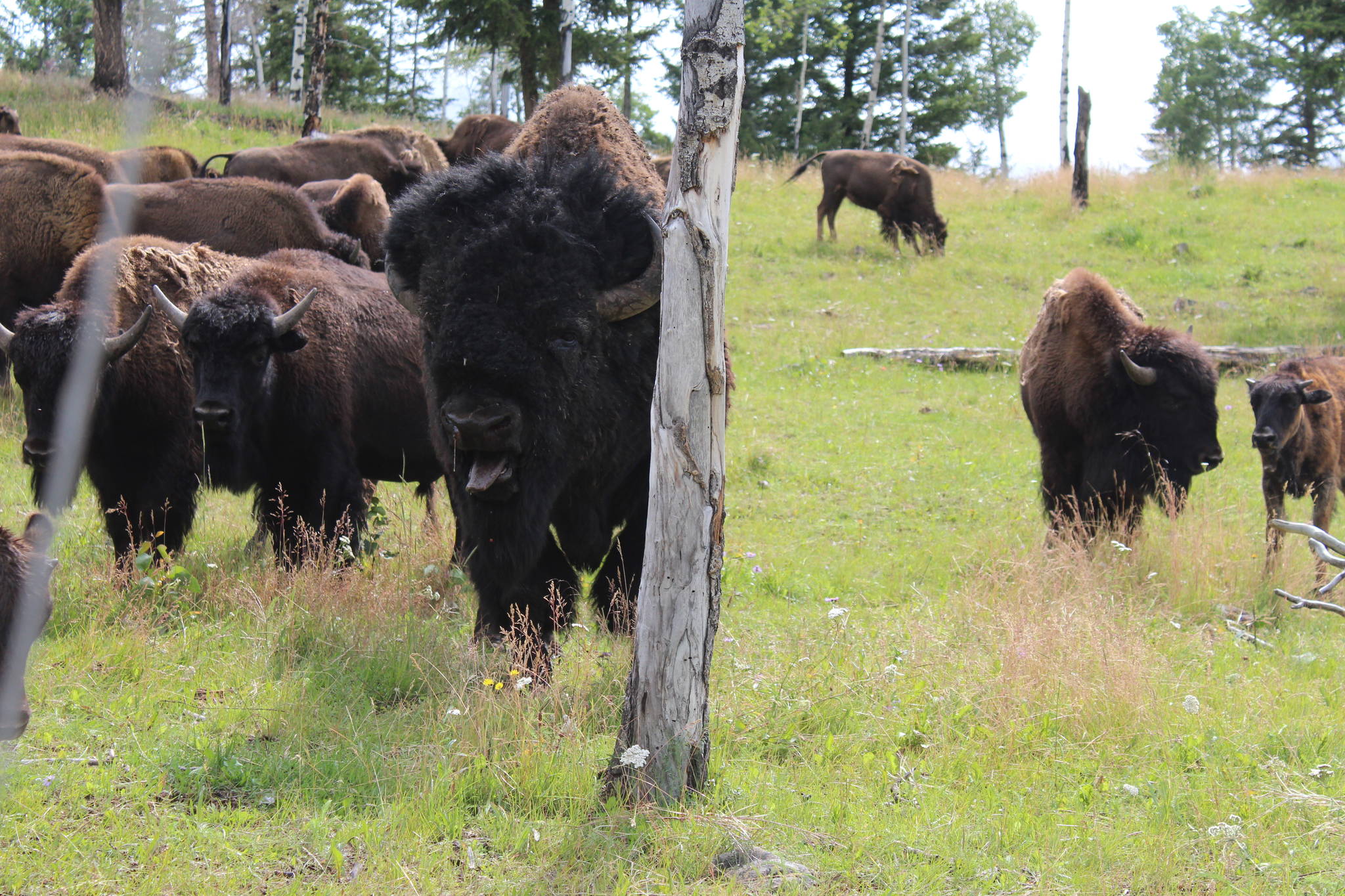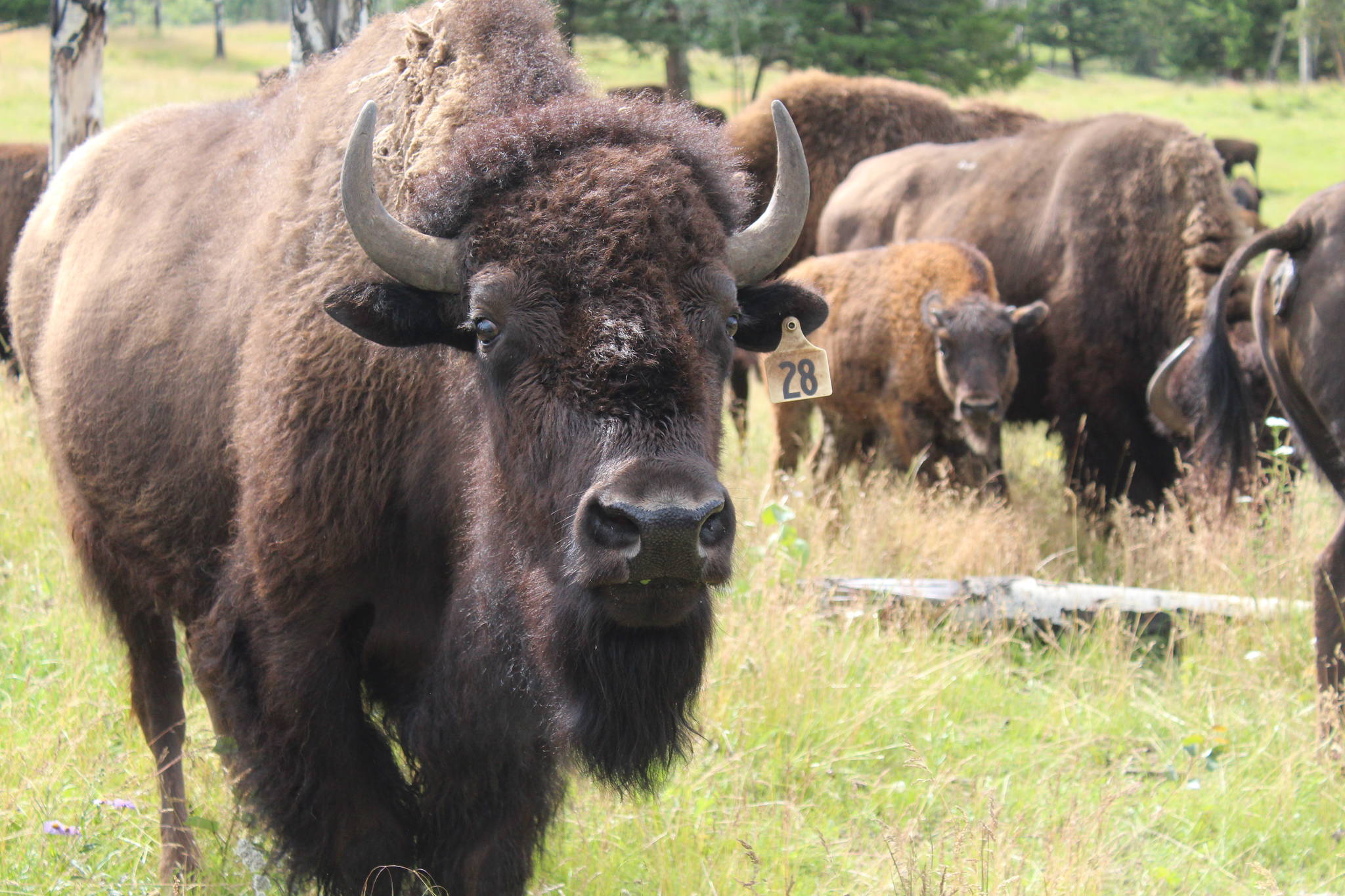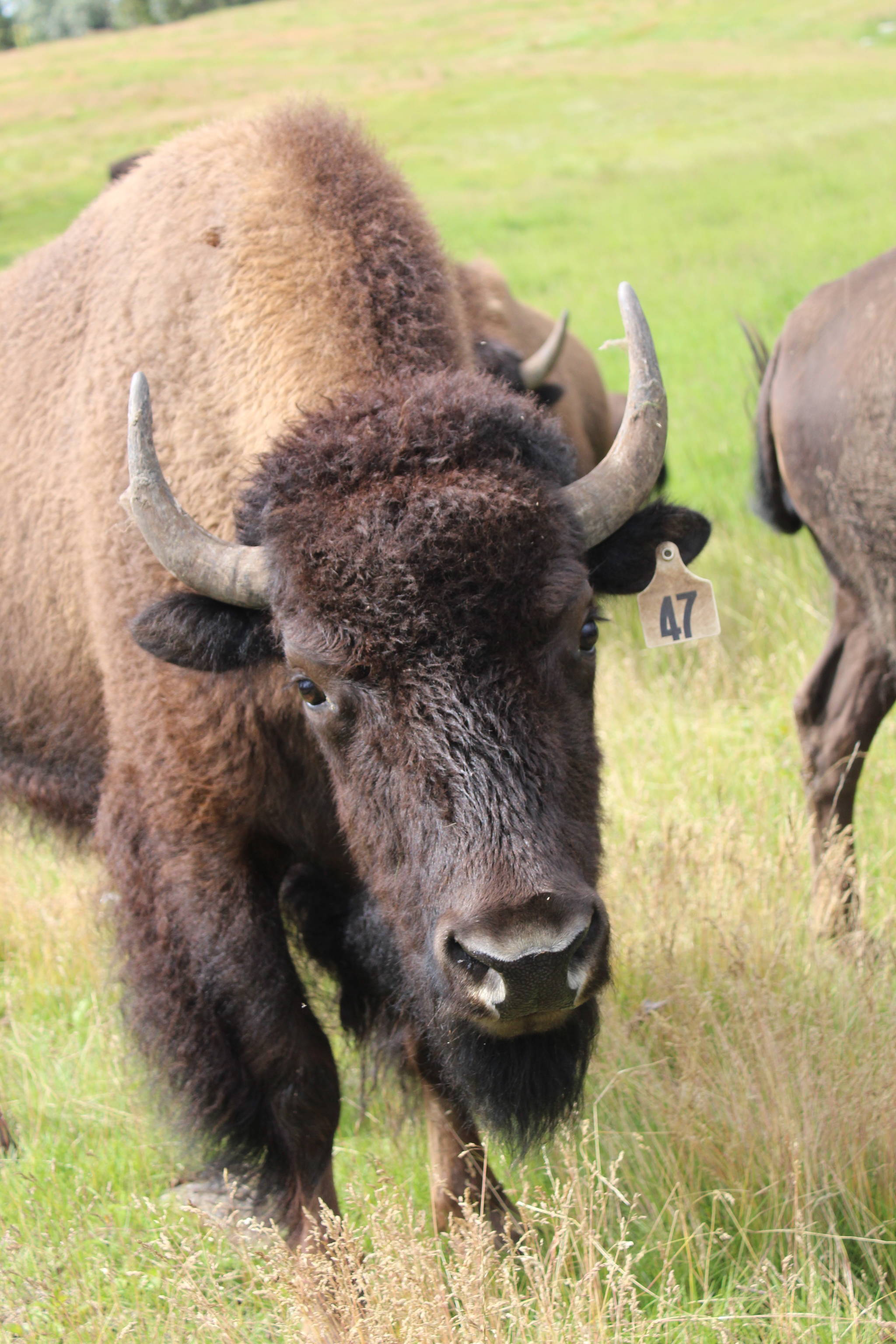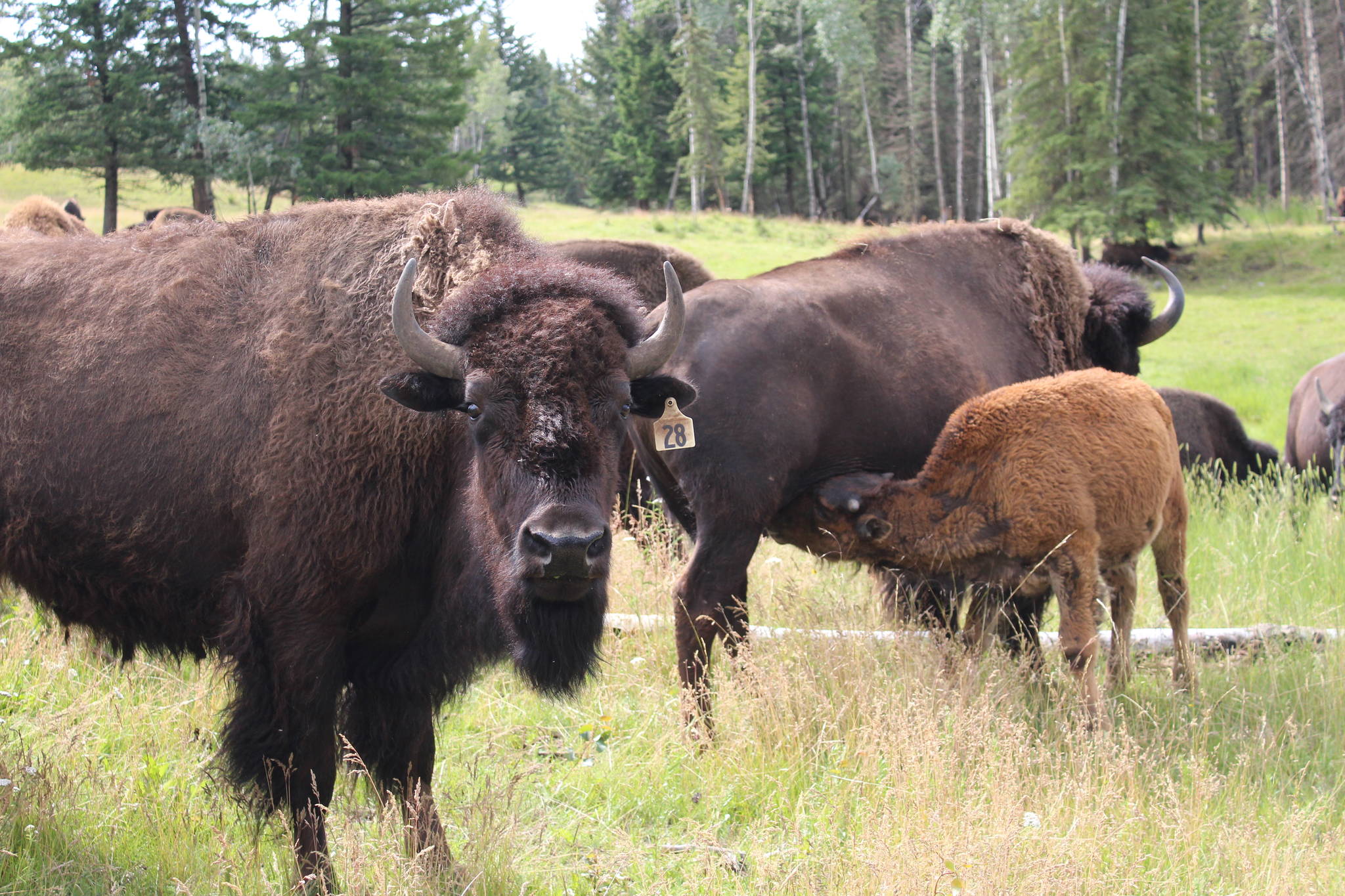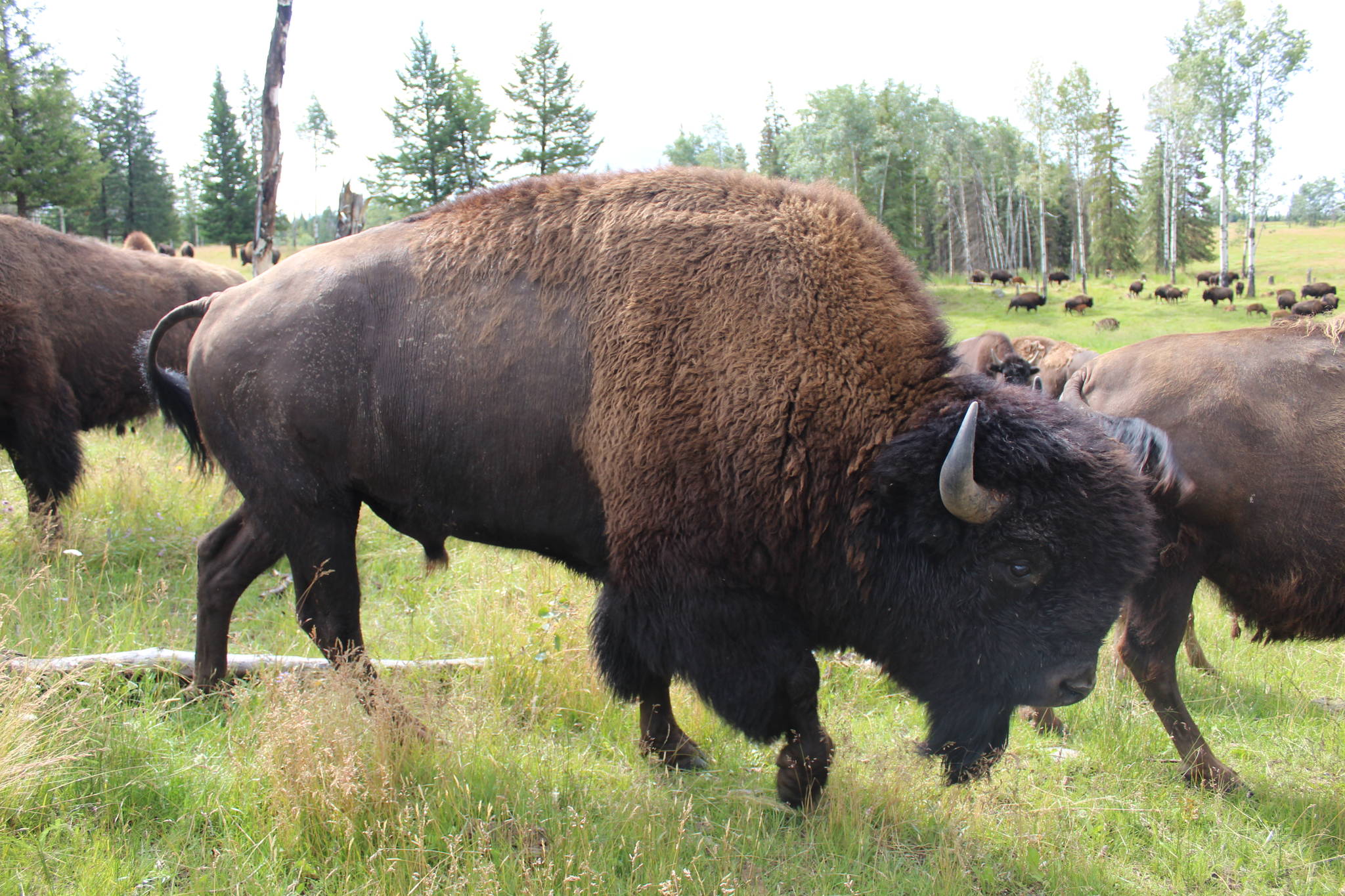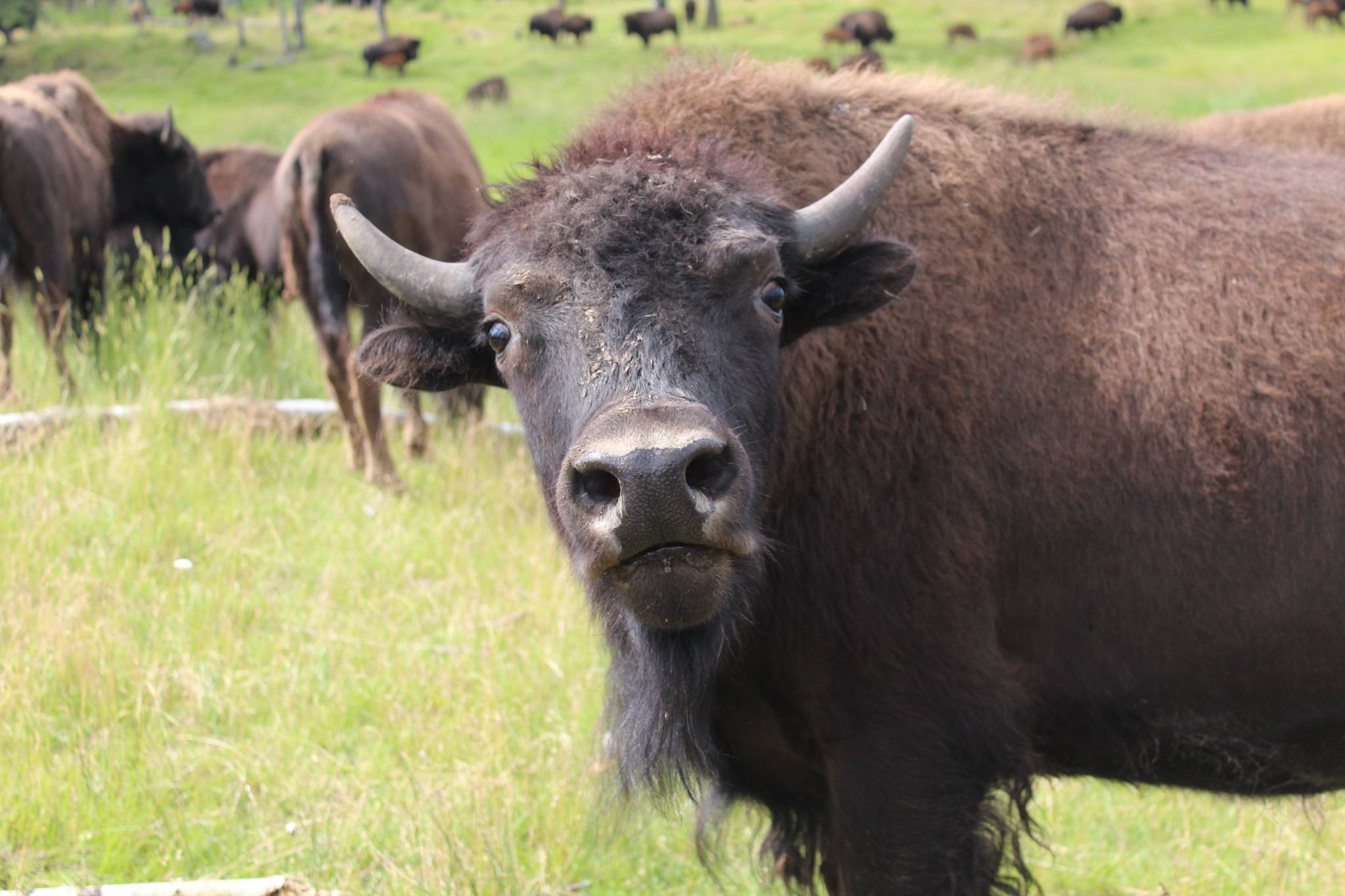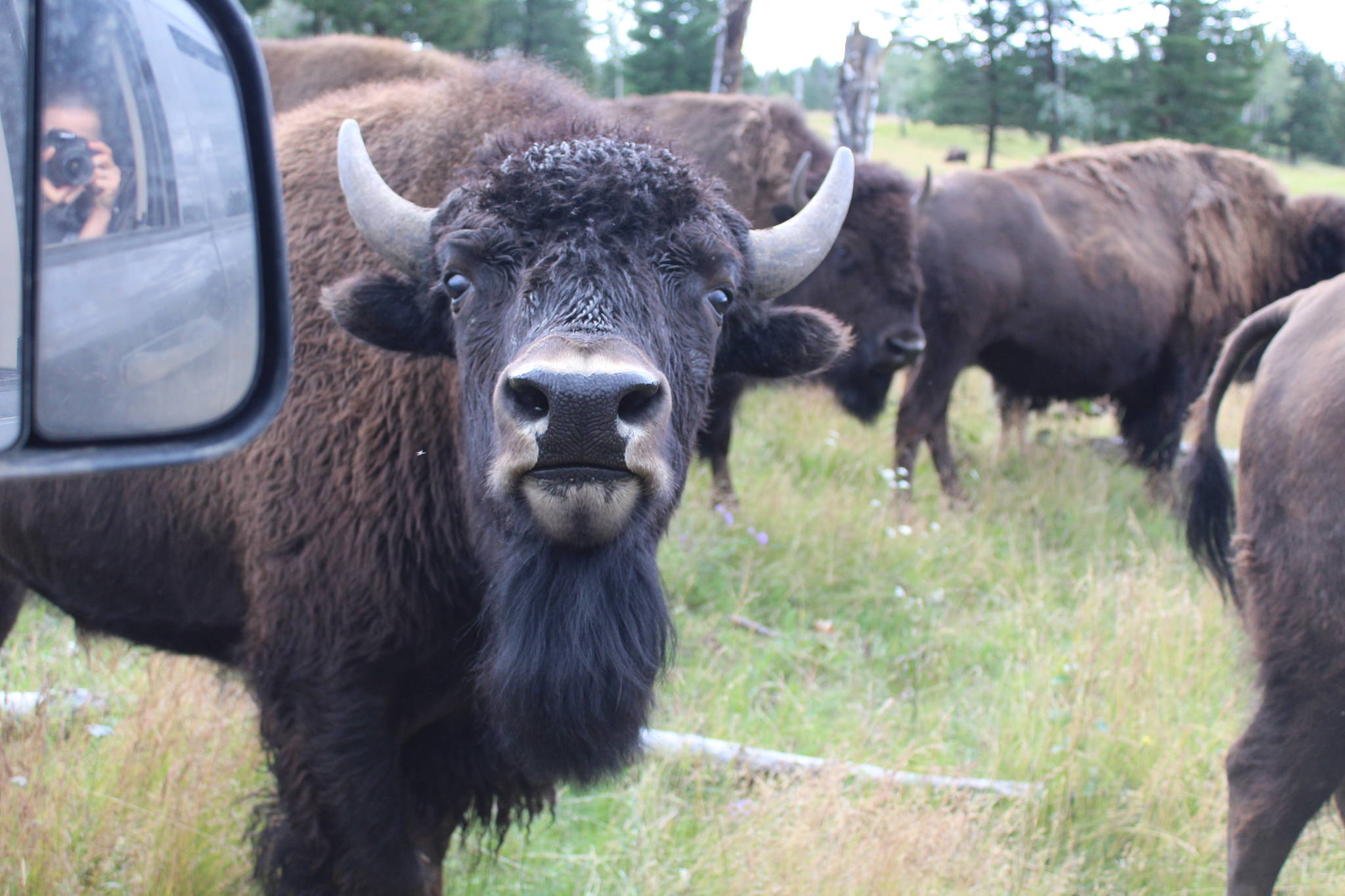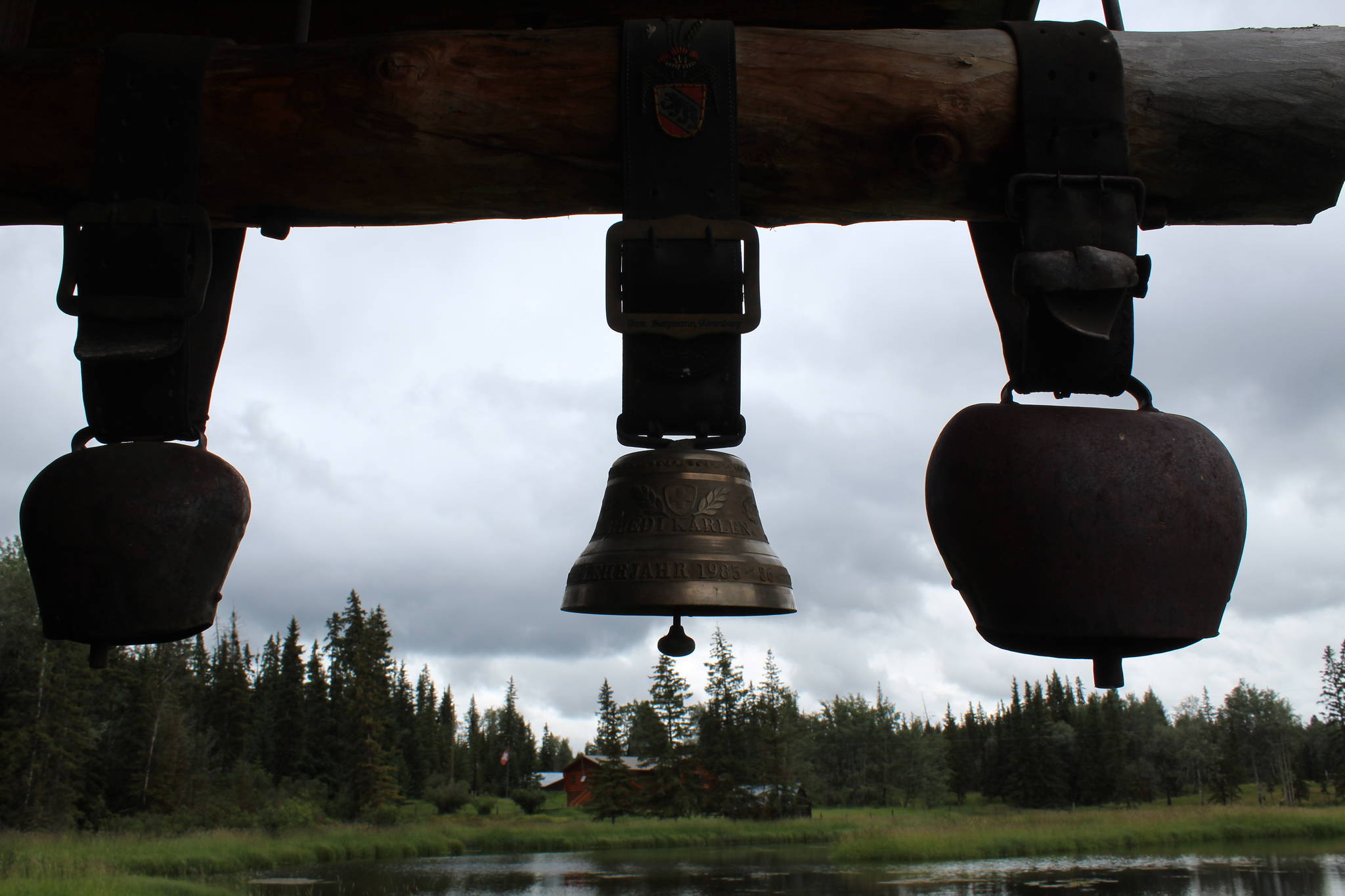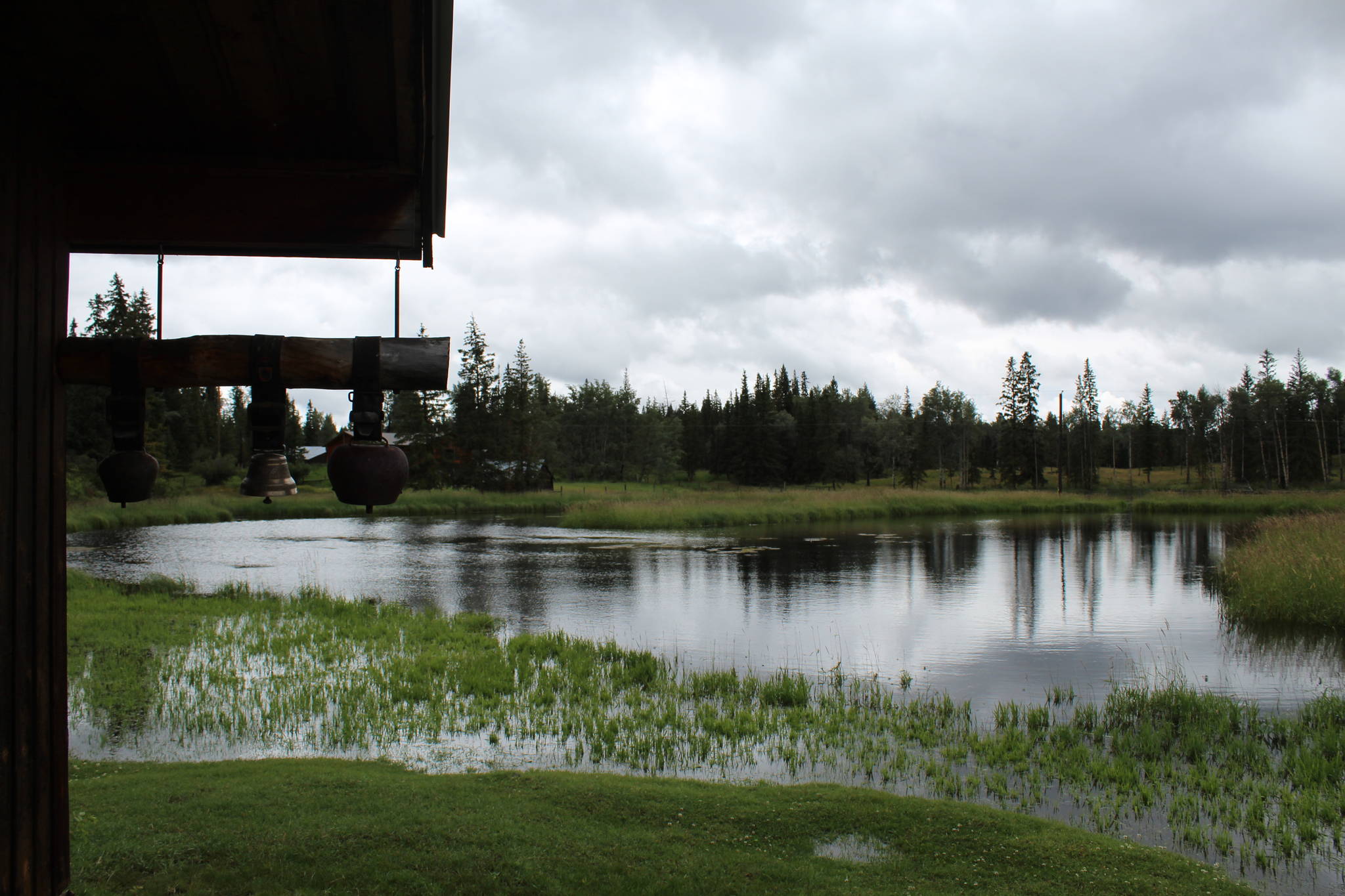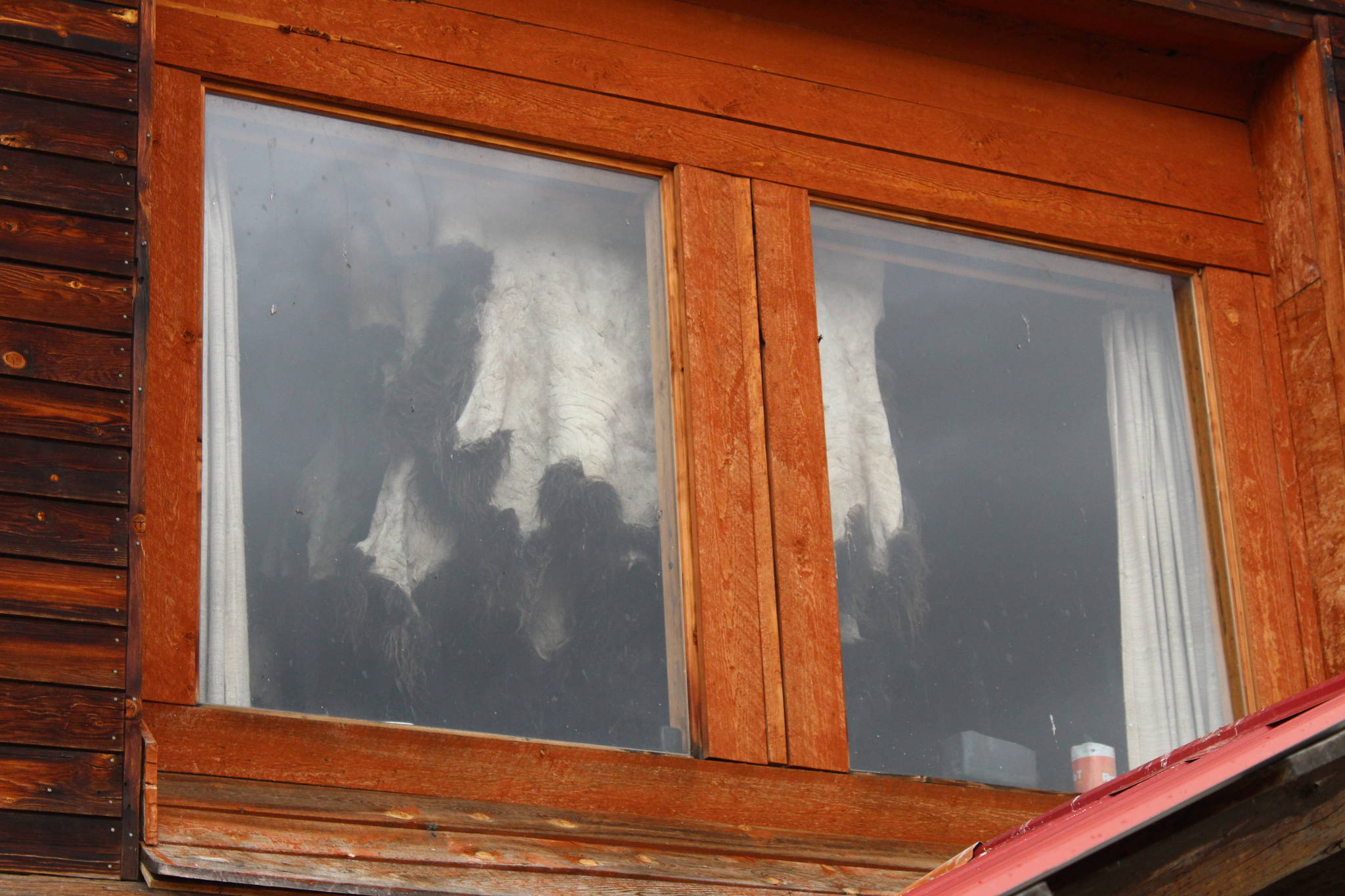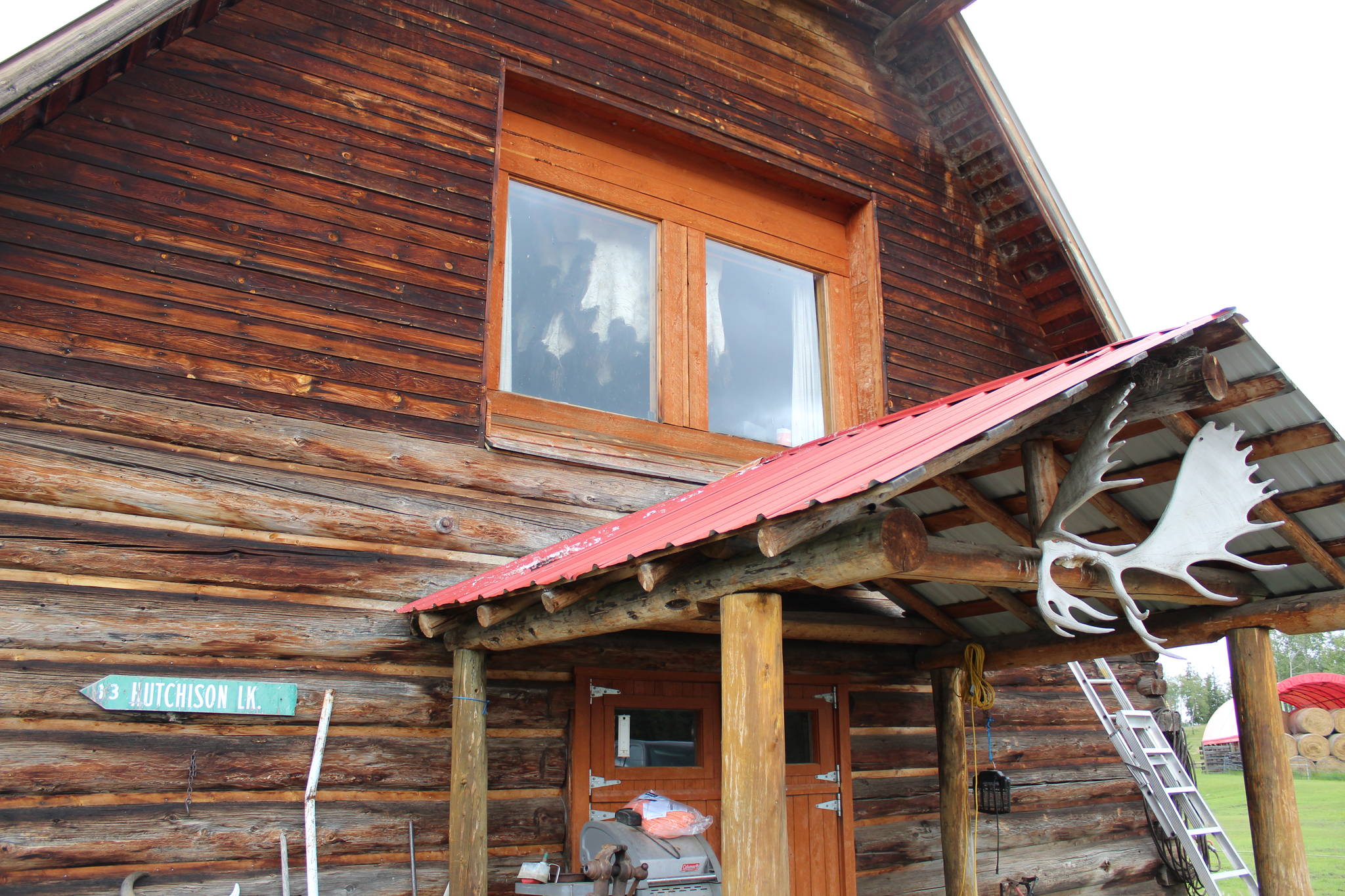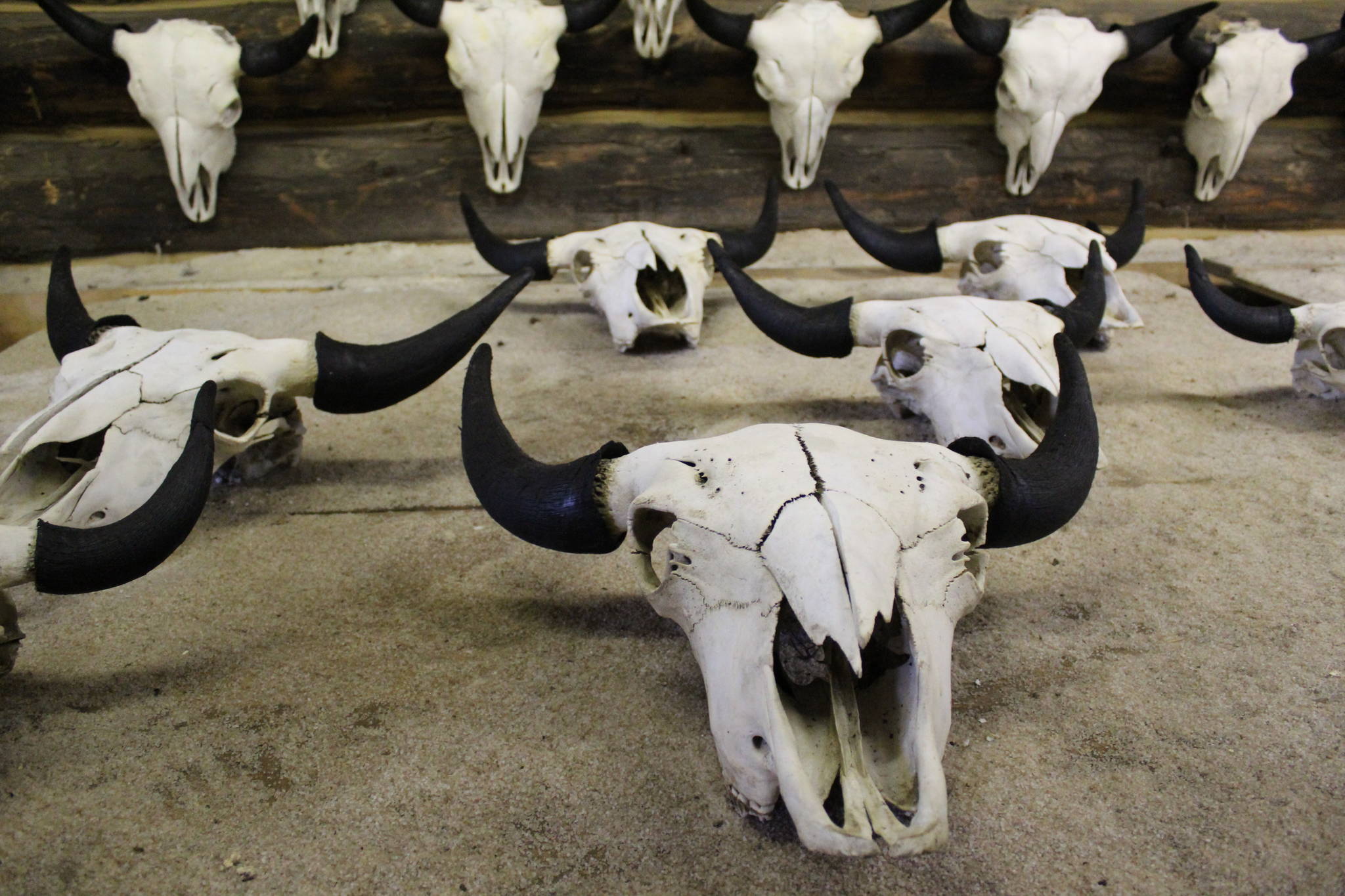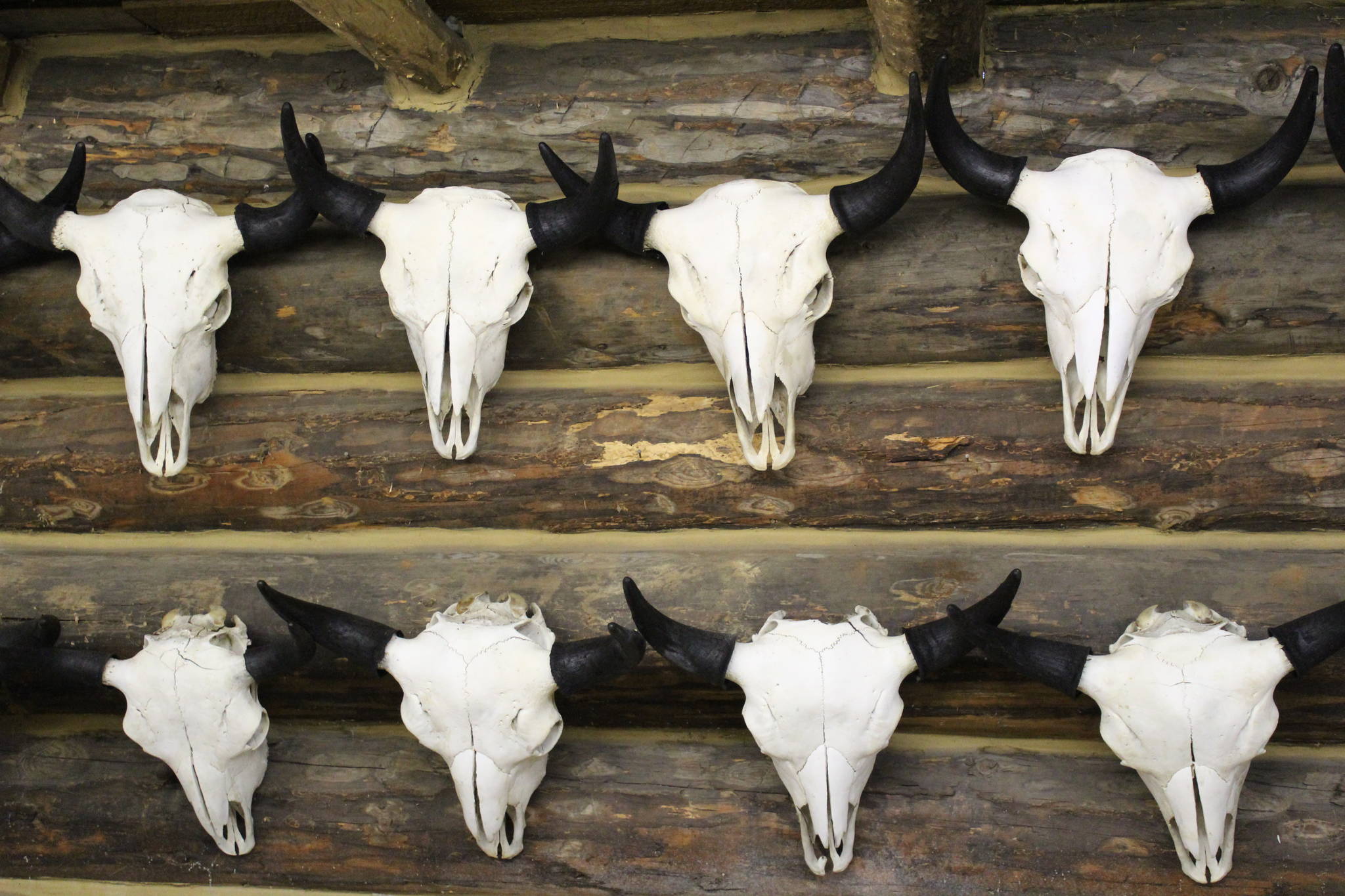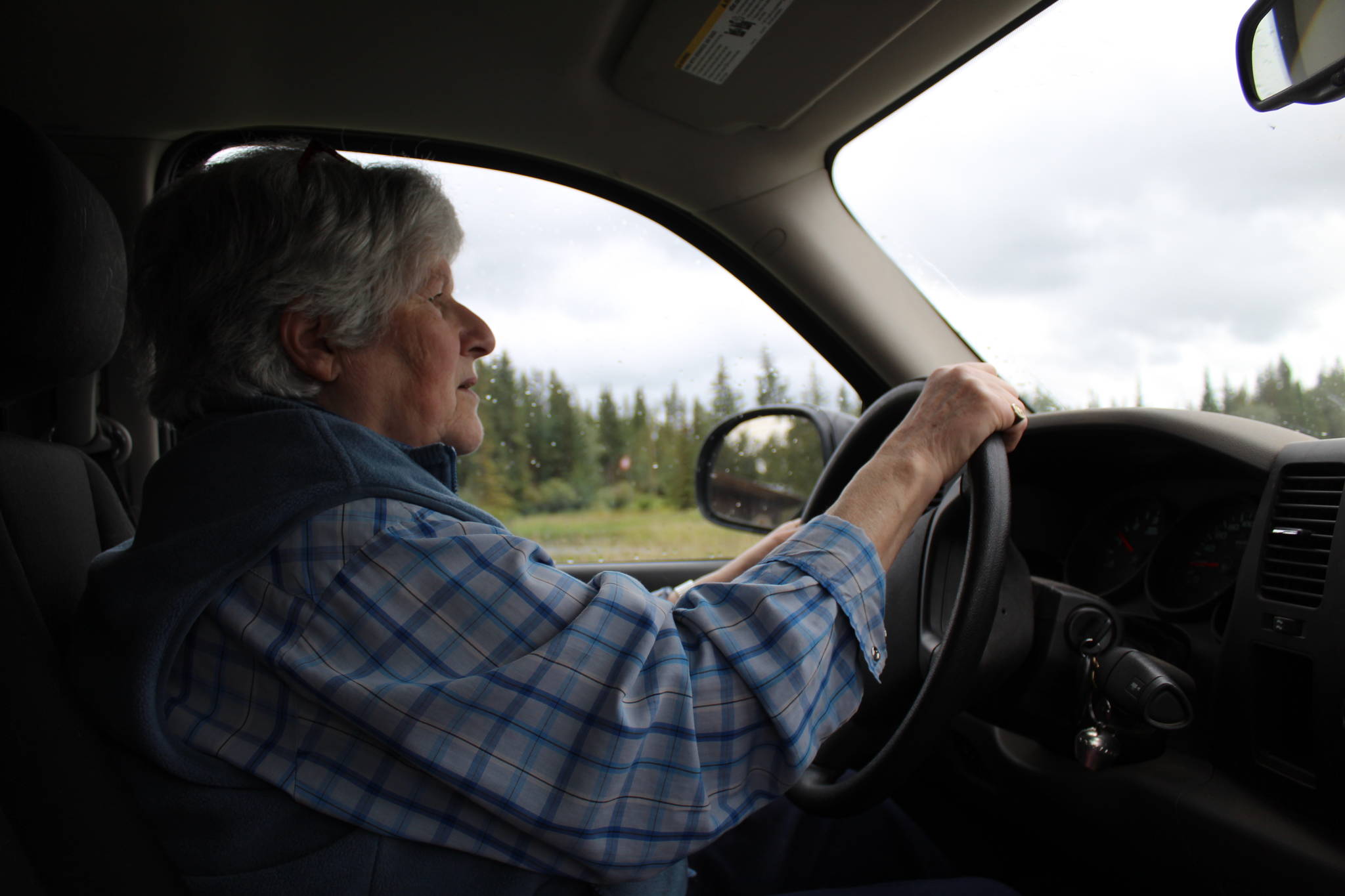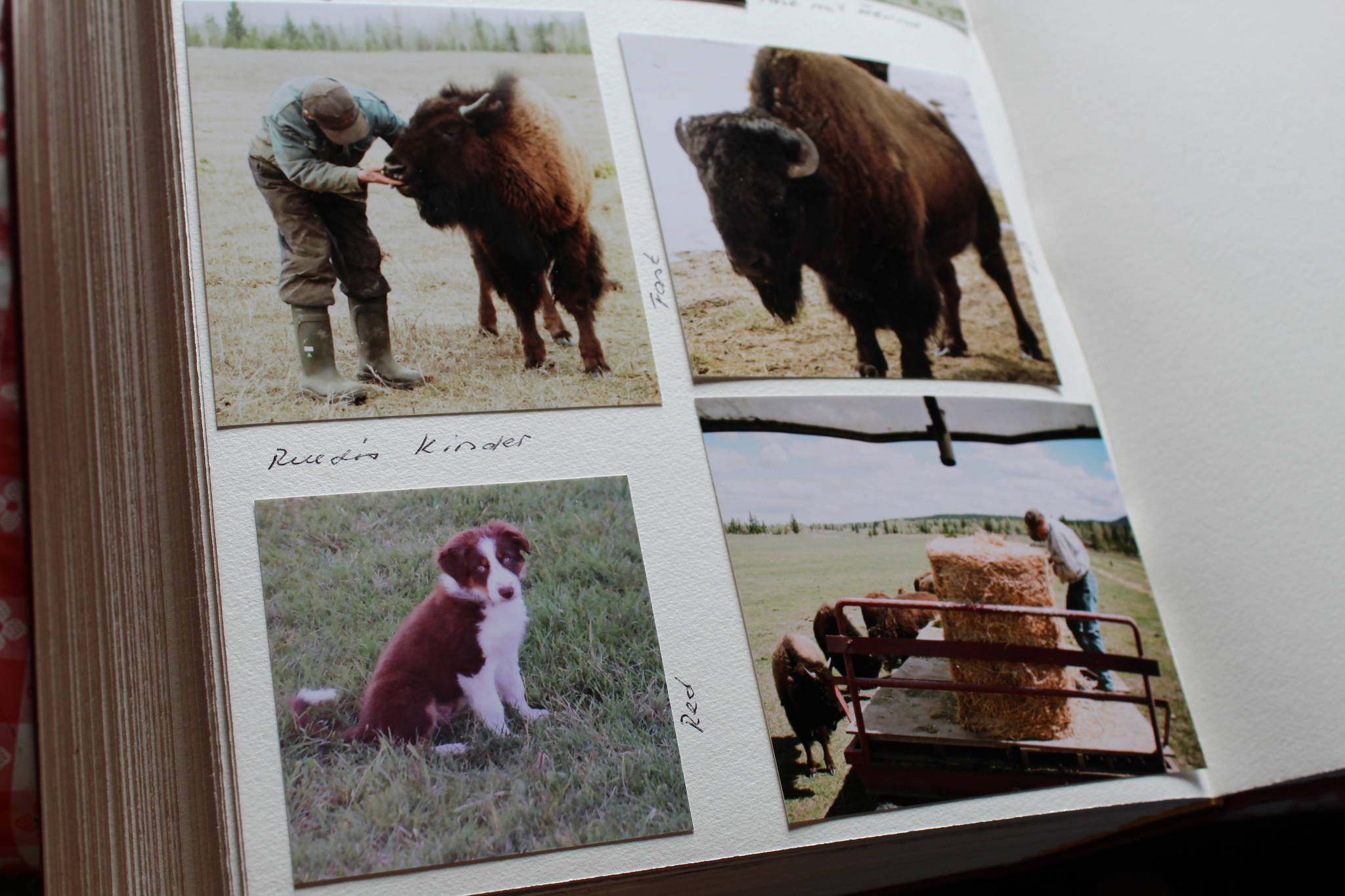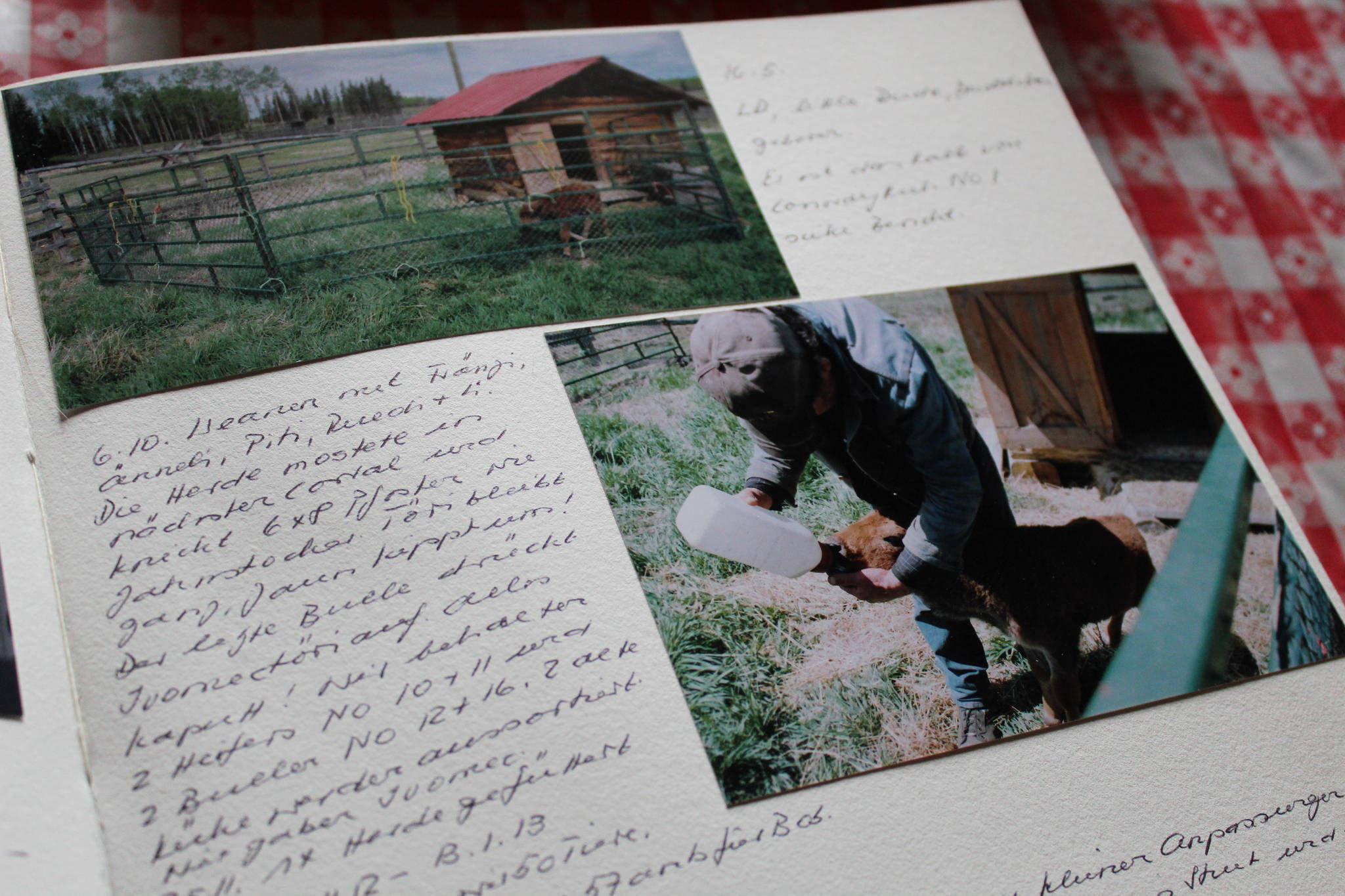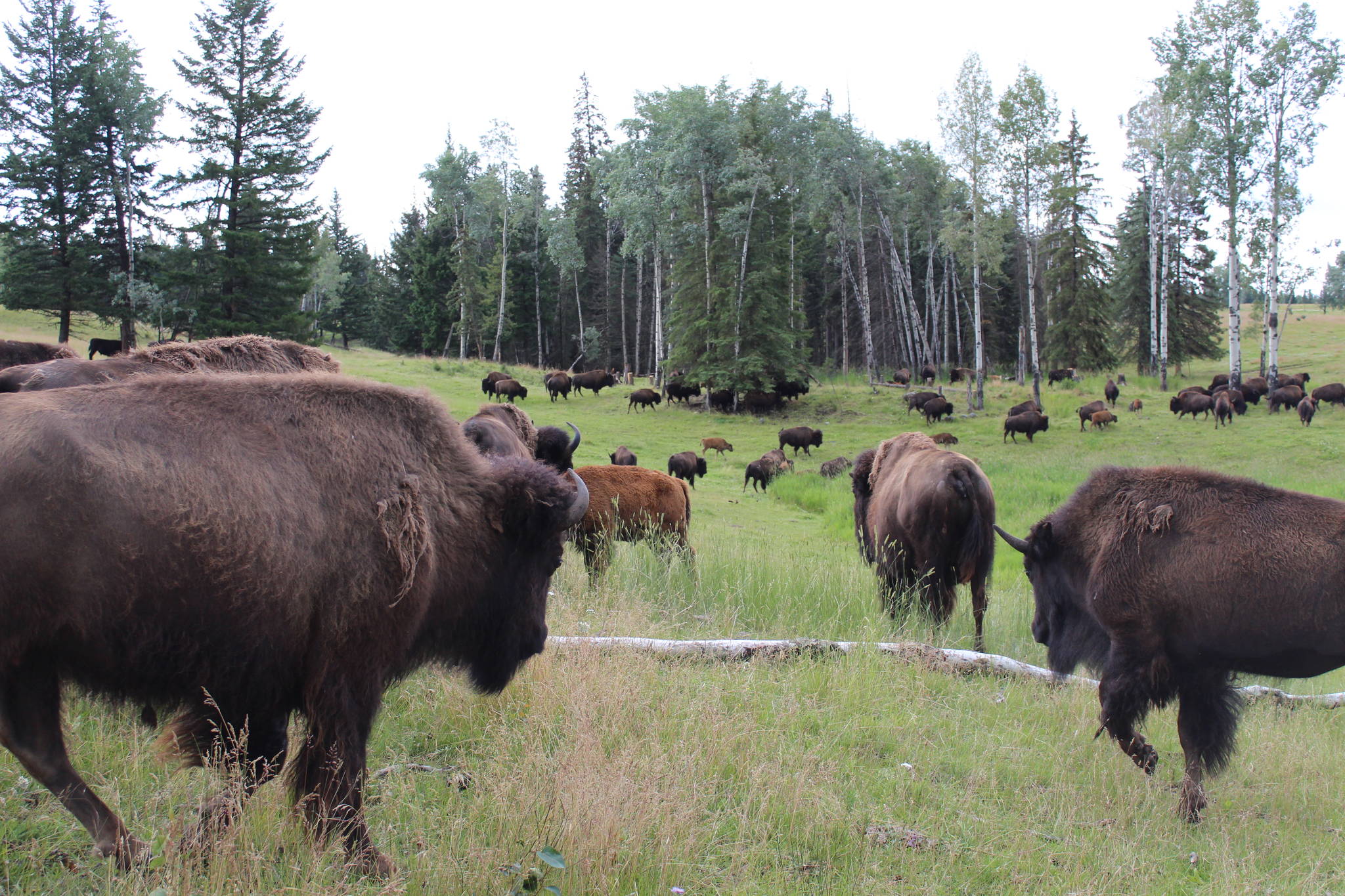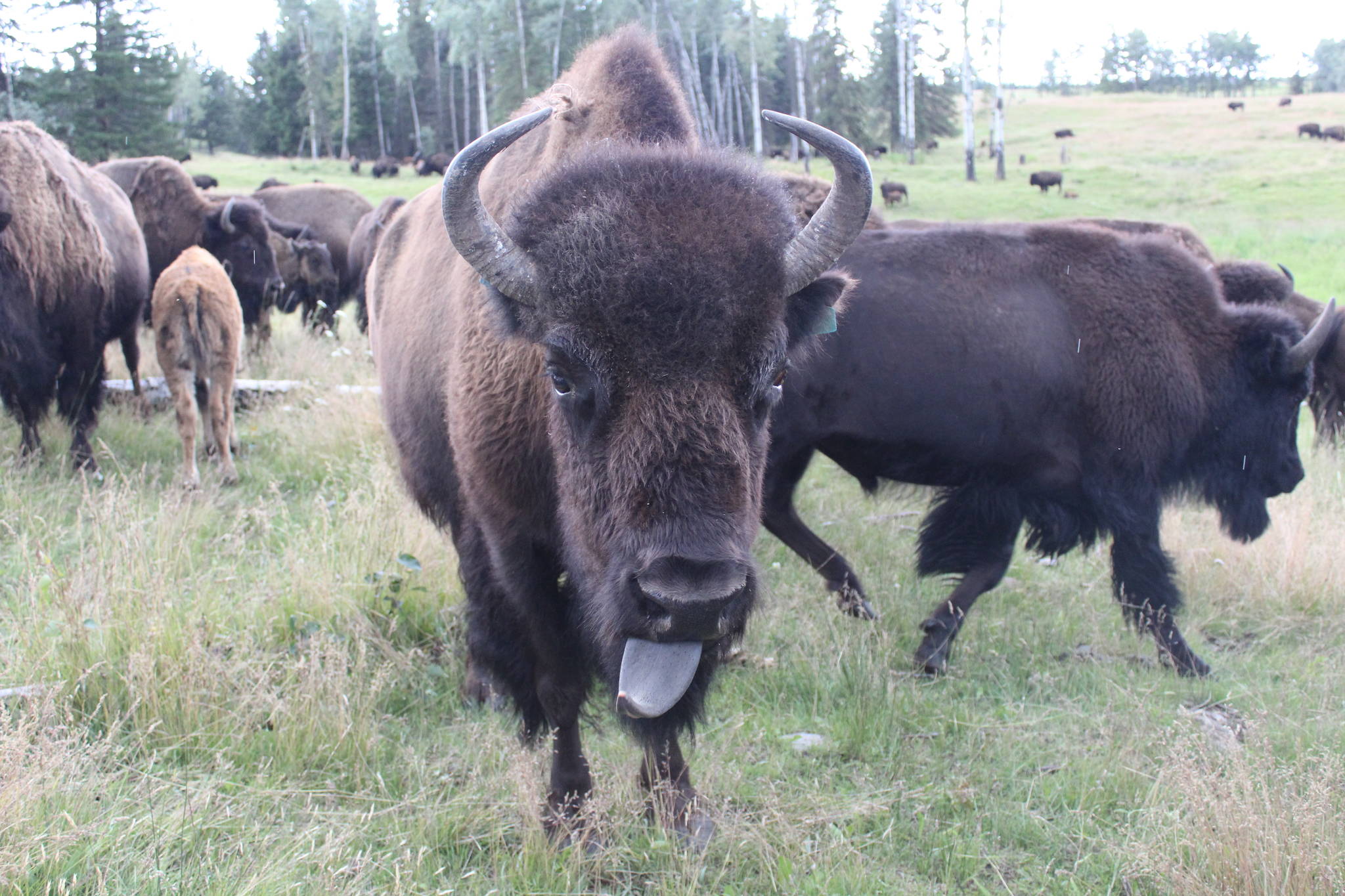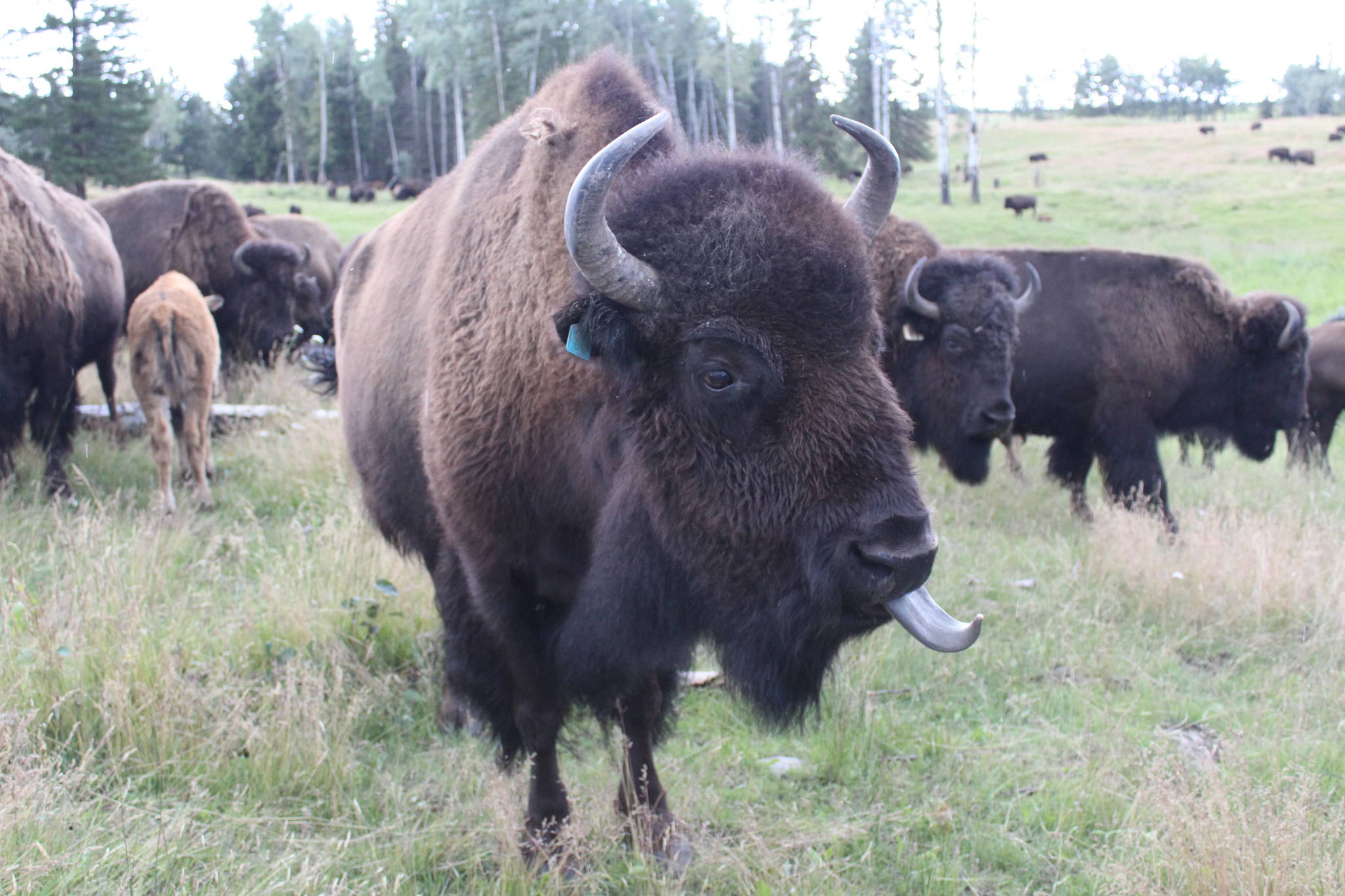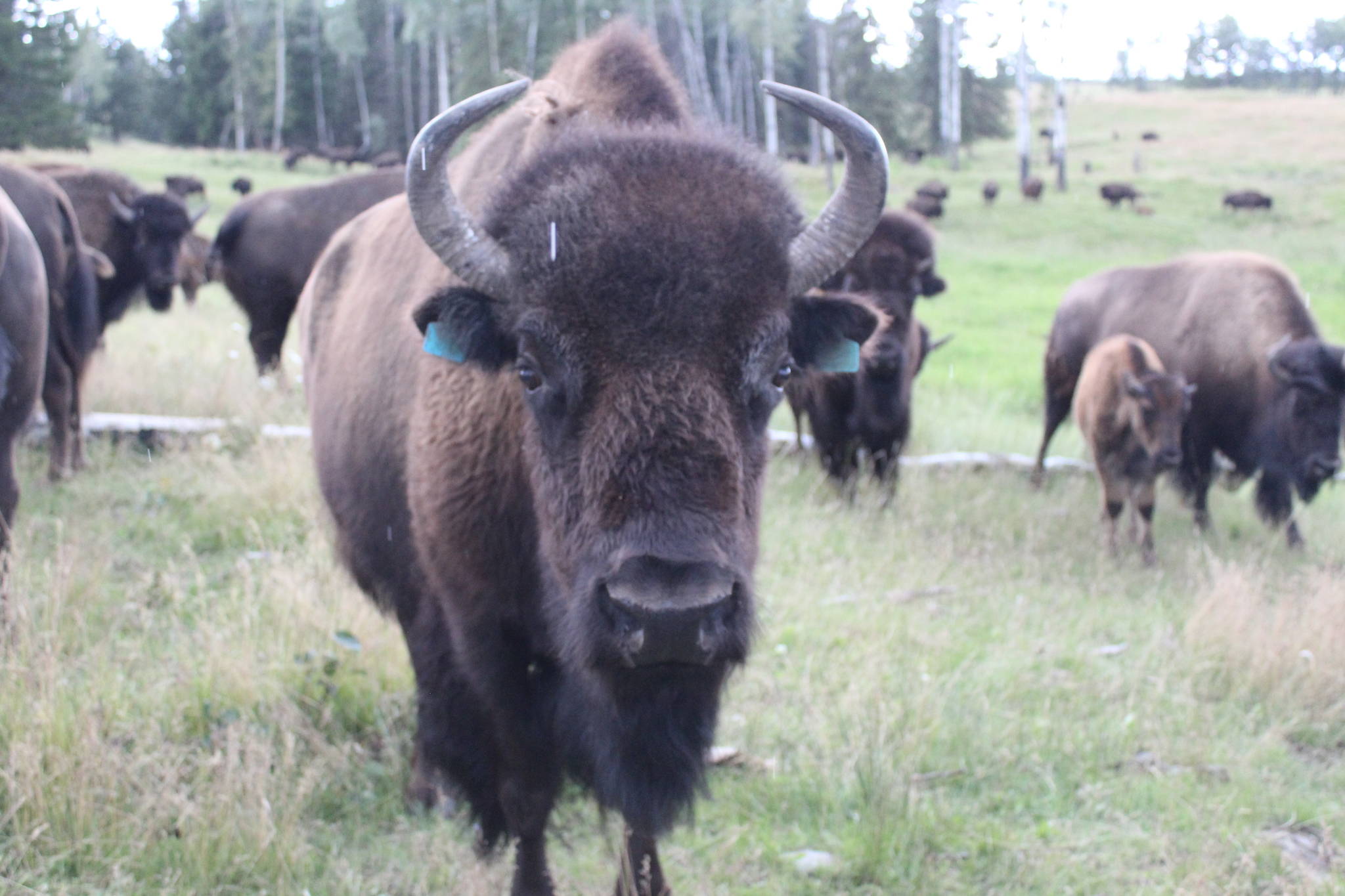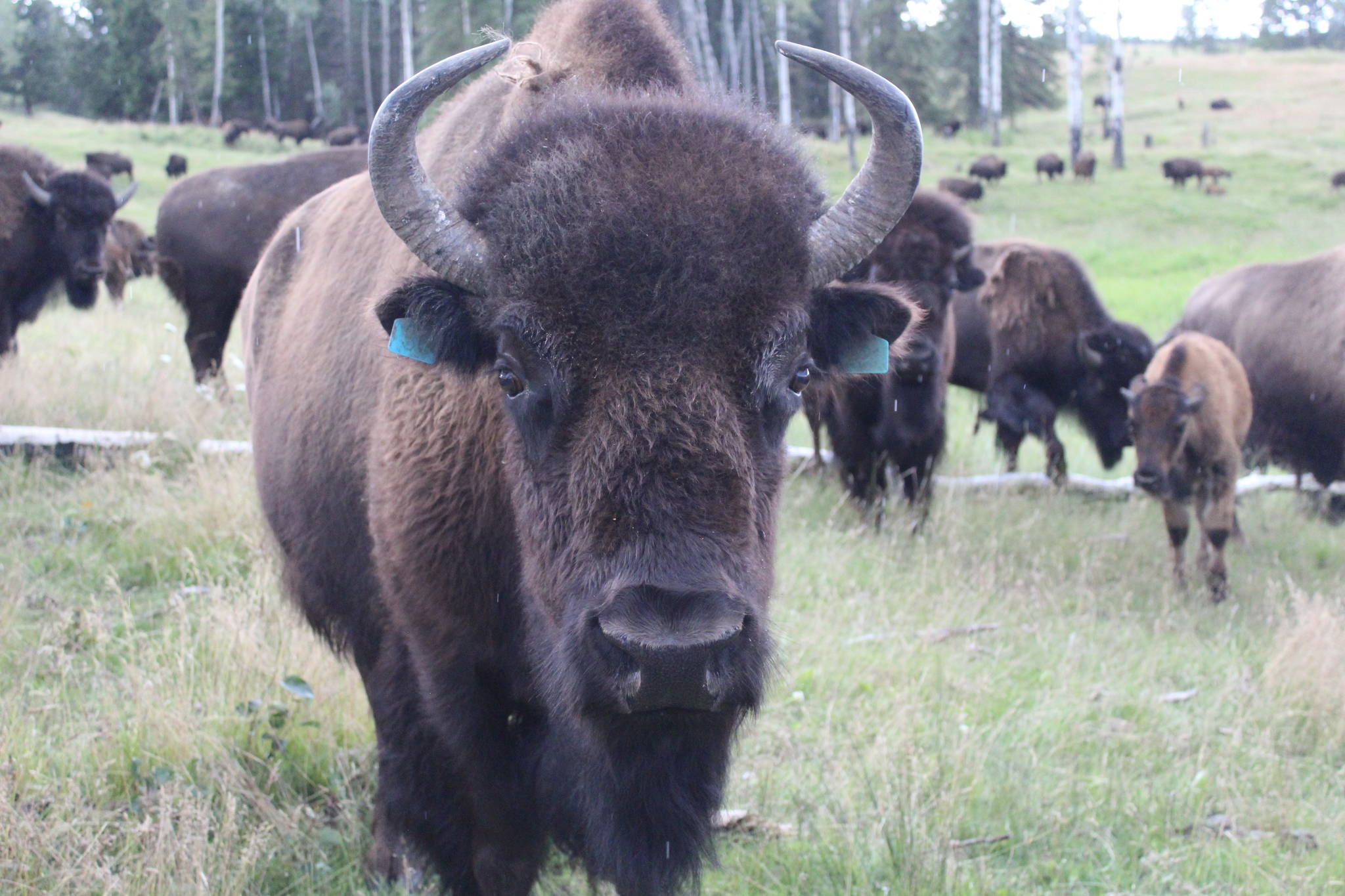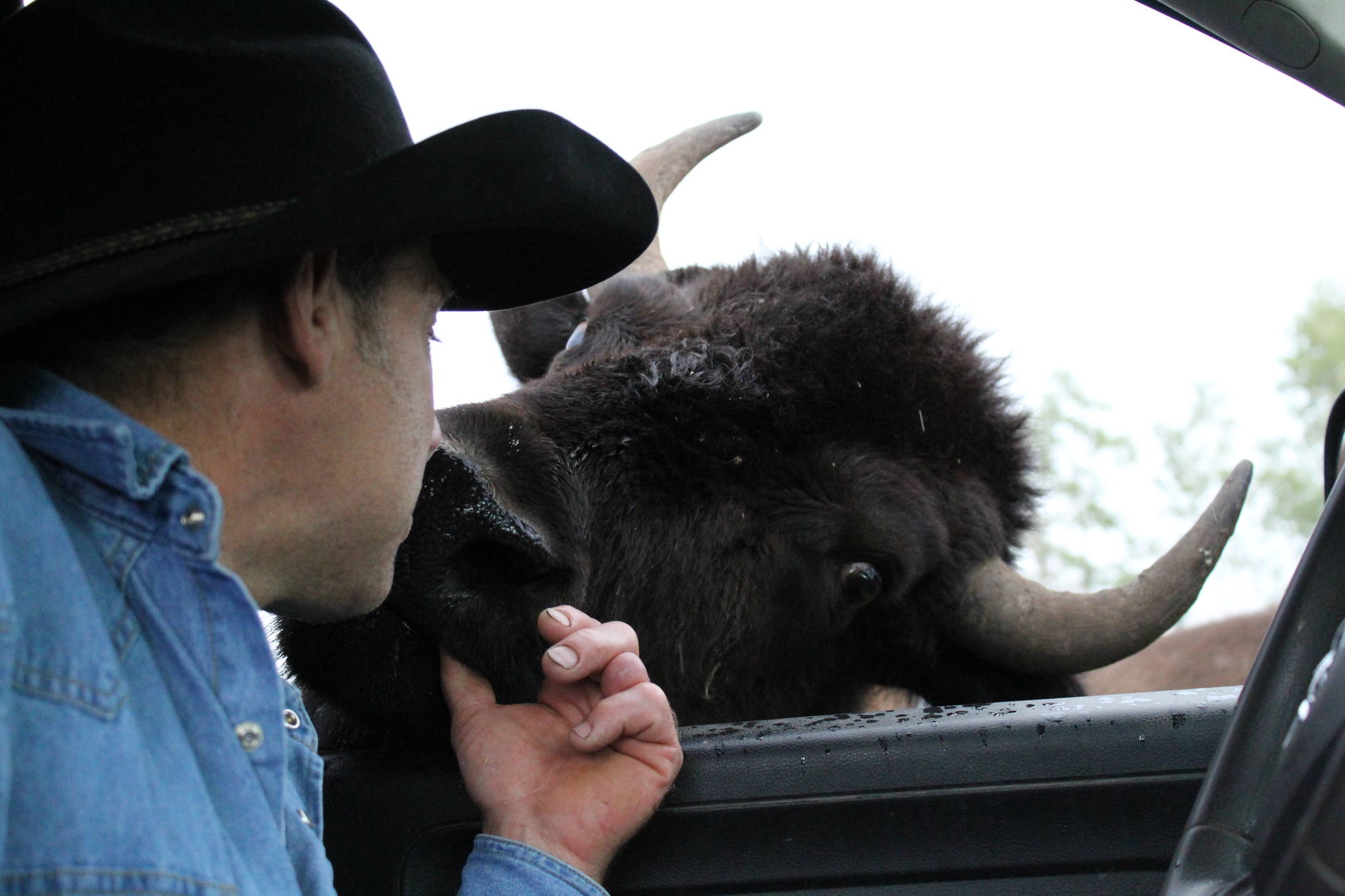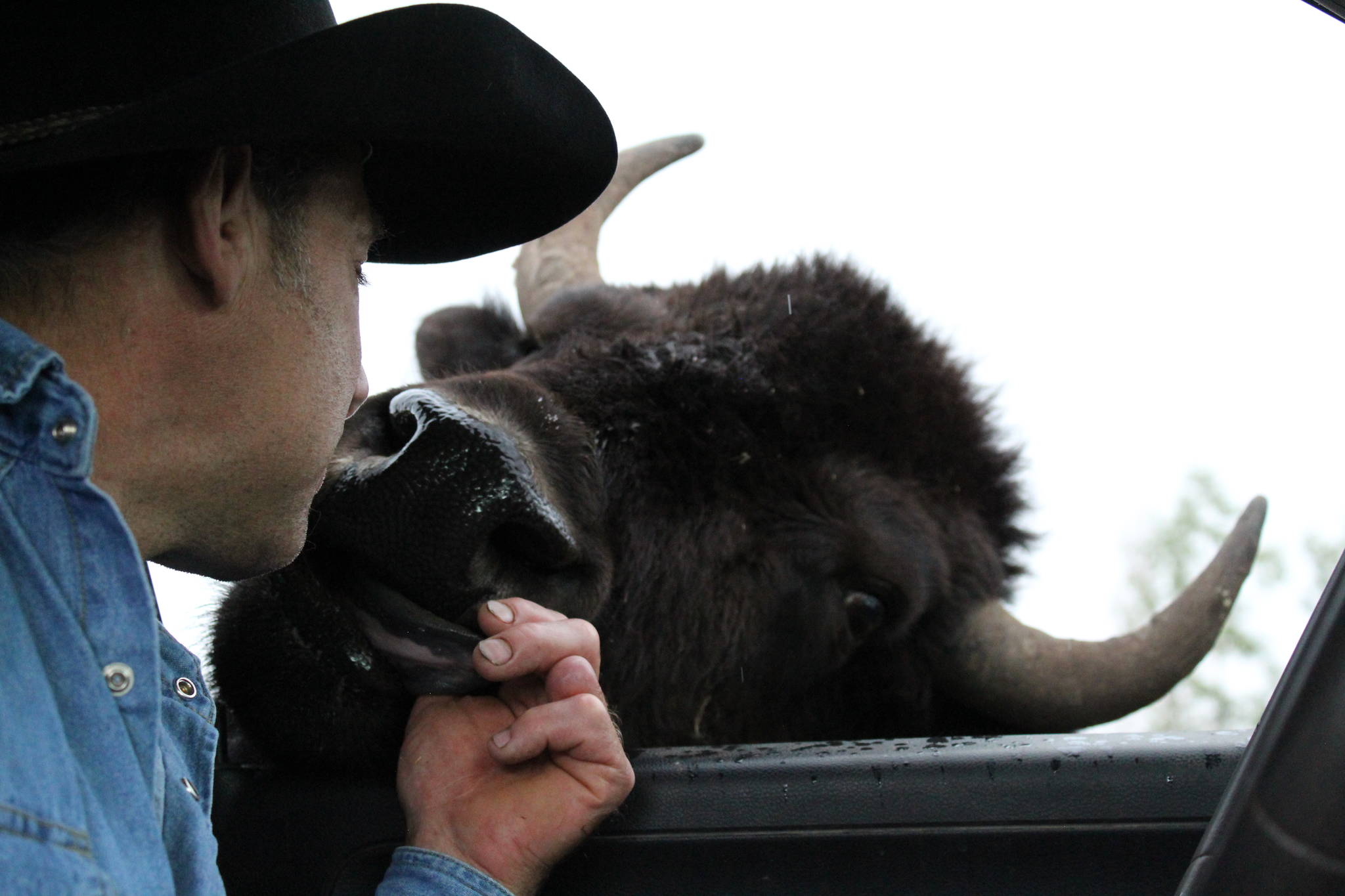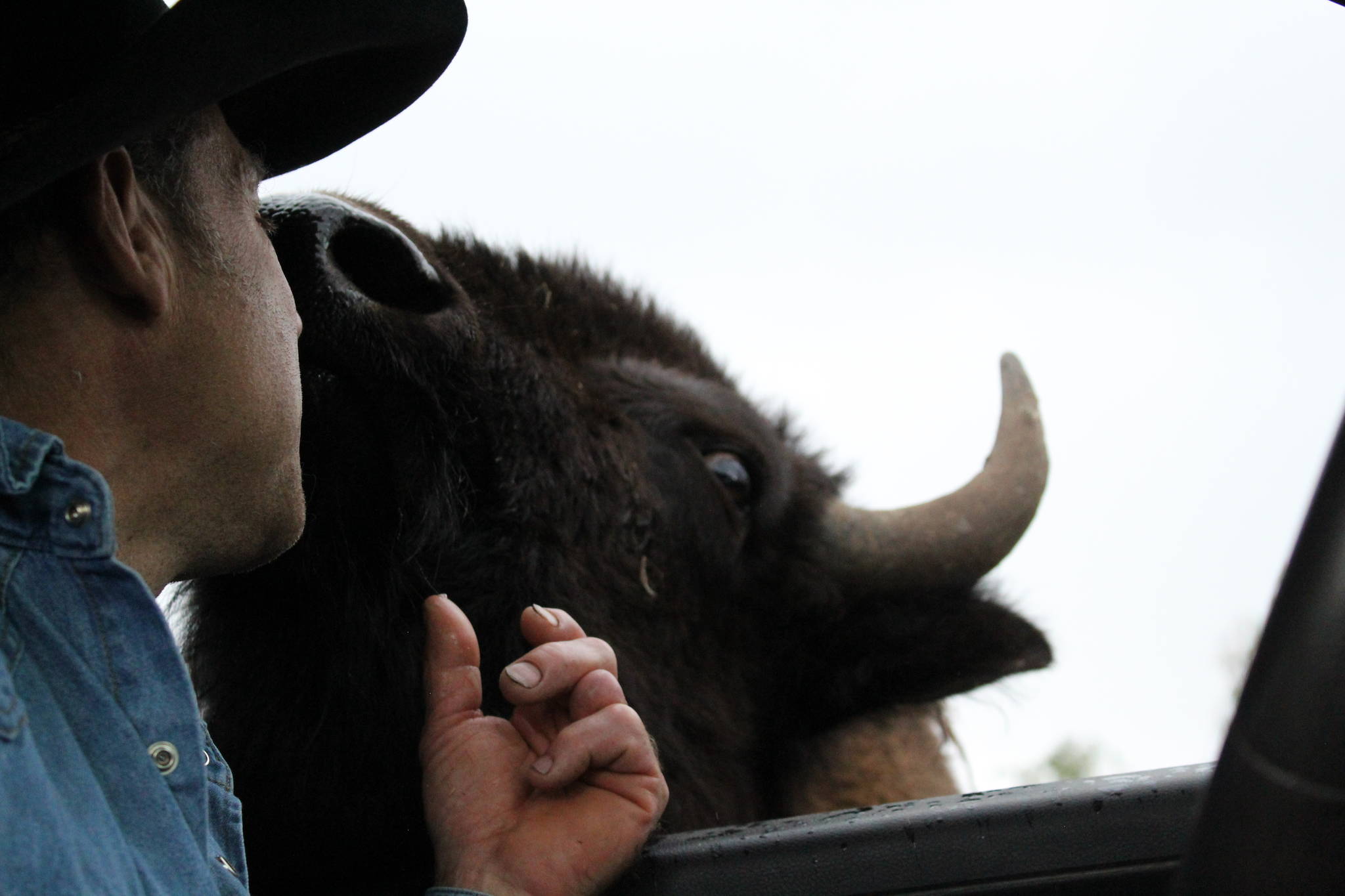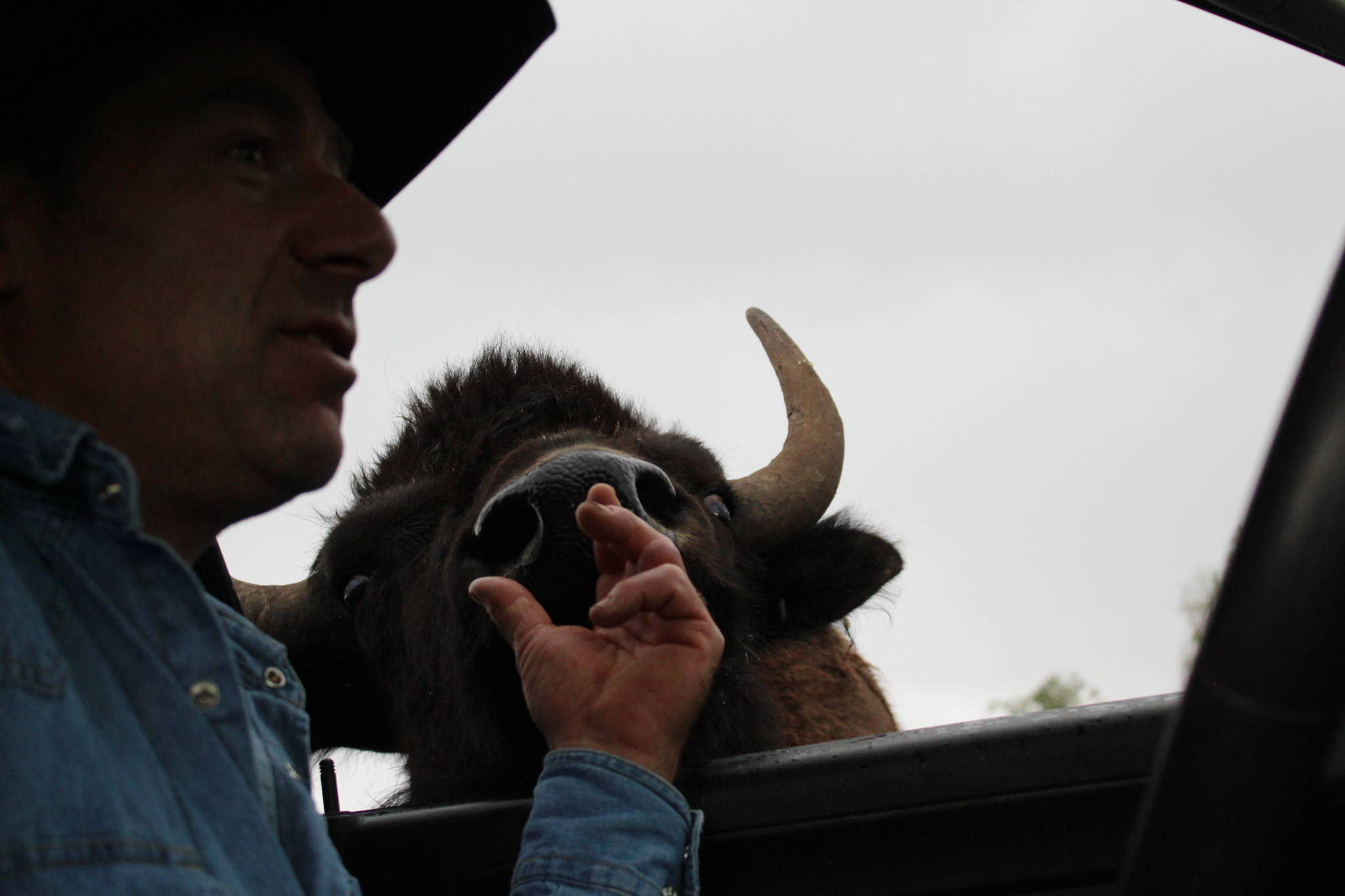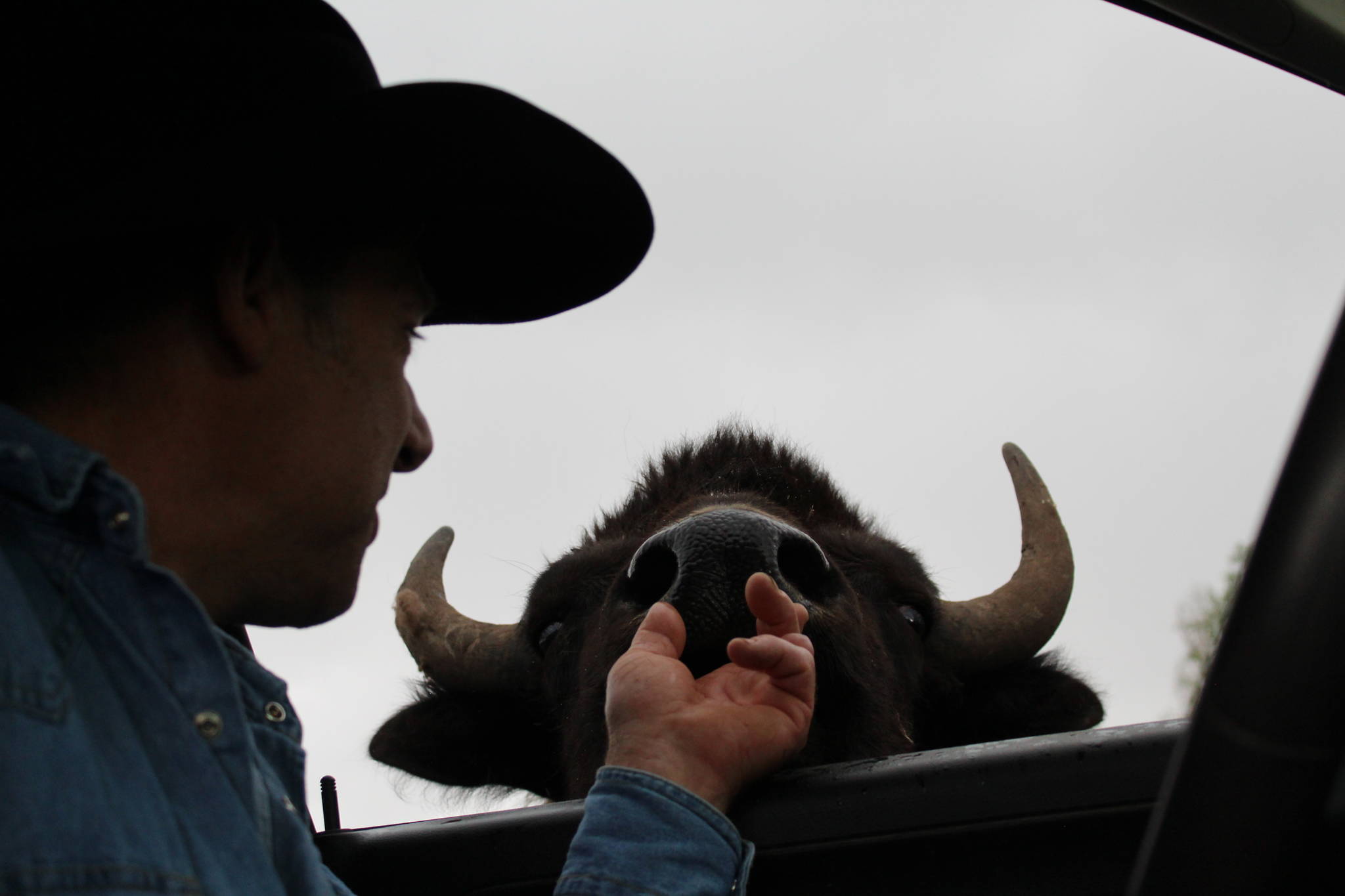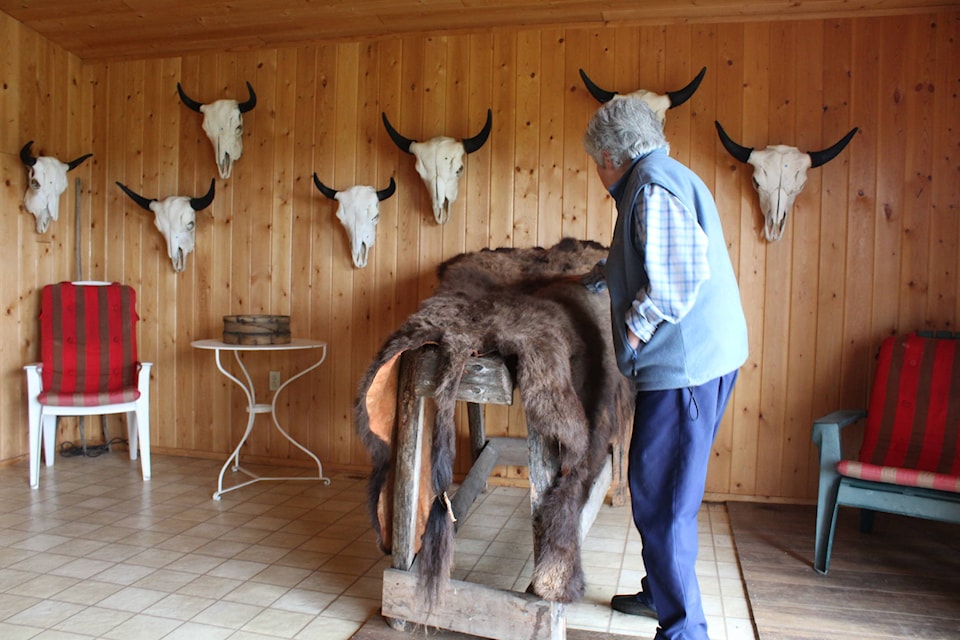On 800 acres of land in the South Cariboo, where grasslands meet forest, one might be surprised to find a herd of buffalo, nestled in pastures alongside Green Lake Provincial Park. Since 1986, the Karlen family have been ranching near the small community of 70 Mile House, but the family originally moved to Canada from Switzerland to pursue their dreams of raising buffalo.
Elisabeth Karlen and her son Rudy are the owners solely responsible for the operations of XH Buffalo Ranch, which pastures on deeded land. From the long driveway that winds out to the ranch, one might be lucky enough to spot the buffalo, and a few vultures nearby, too. The property is dotted with many small lakes and ponds, old wooden barns and outbuildings, and includes an inspector-certified slaughterhouse. The ranch is entirely reminiscent of a western movie scene.
The ranch has its own ties to Hollywood, after all. The Karlens supplied the genuine buffalo skulls and hides that were used in the Academy Award-winning 2015 film The Revenant. In the film, Leonardo DiCaprio and other stars are pictured wearing buffalo hides that Rudy tanned himself. His family raised the buffalo that provided the hides and skulls recognizable on the silver screen, but the primary business at XH Buffalo Ranch is the sale of organic meat.
Rudy was a farmer back in Switzerland before the family decided to make their journey to the Cariboo.
“We were interested in Buffalo,” said Elisabeth. “In Switzerland, it’s not possible because there is not room enough. Buffalo need a lot of pasture.”
Rudy is a local Farrier who works daily on the buffalo ranch with his mother.
“Rudy learned the business as a cattle farmer in Switzerland. The first thing was we were running [in Canada] about 500 [head of] cattle, then we thought we have enough land and food for the animals, we could have a few buffalo to know how they are. We could have a few of these animals to see them up close and learn from them.”
The Karlens soon realized that the pasture and facilities required for a handful of buffalo are the same as those needed for an entire herd. With that in mind, the family went all-in, but an interest in buffalo started early on in life for Elisabeth.
“When I was a child, we had a little zoo in Switzerland and I always visited the bison,” she recalls. “My husband and I, we started with about 30 young heifers. Right now we have about 100 breeding cows and about the same amount of calves, yearlings and bulls. Altogether it’s about 250 animals.”
Karlen said there used to be a couple of other buffalo ranches in the region, but those operations were sold.
“The big buffalo ranches are up north and in Alberta, because of the land. I think we are the only ones [left around here].”
Related: Cariboo Calling: Portrait of a cowboy: Red Allison
“Cattle live on a ranch and in spring they go to the Crown land,” said Elisabeth of some key differences between raising cattle and buffalo. “The cattle are out on the range all summer long. That’s why we need cowboys. They have to ride and check the herd to know if these animals are healthy and to bring them to another spot or place so they have enough food. Buffalo in B.C. can only run on deeded land, not crown land. In Alberta they can run the buffalo on crown land, but not in B.C.
If our buffalo will be out on the range in the summer, we could run much more, but actually, I’m quite happy that they are here. We have strong fences so you know where the animals are because if somebody here on the lake sees a cattle cow walking through the road, that’s not a big deal. That’s a cow. But if a buffalo would come, then it’s a very big thing and the difference is actually not very big. Buffalo are more shy than cattle, because cattle are more used to people. If you see a buffalo, usually the buffalo runs away, he disappears, but the cattle, you can talk to them if you like. They are not all the same, but they are more domestic.”
In Karlen’s experience, a buffalo has only gotten out of their pasture once, after someone made a cut in one of their fences. Between the short time of that animal getting out and the family being informed of the fence’s damage, the female had already made her way back through the broken fence and returned to the herd.
Checking fences is a regular duty for Elisabeth and Rudy, but usually, the buffalo don’t escape. They are herd animals and know their pasture.
“They are very peaceful,” said Elisabeth. “People always think it’s a very dangerous animal. It is a very strong animal, very fast. They run faster than a horse. They look quite slow and usually, they walk slowly, but if they run, then you have a stampede and that’s a bad thing. So you keep them quiet and they are happy.
They are actually very protective with the calves, but that’s not something special. Even a mouse protects her babies, though it’s not the same size. A good cattle cow, she looks after her calf, too. But buffalo cows, in spring when they are calving, we are very careful and never come between a calf and his mother. But they warn you, buffalo always warn you.”
A snort is the first warning that you had better look out for the buffalo, said Karlen, then the animal may lift their tail as a second warning signal. “Then if you don’t understand, they start with the leg.”
The buffalo may paw or stomp the ground as a final warning. The behaviour isn’t really aggressive, though, said Elisabeth.
“The other day I was out with Rudy and the dog came with us, it’s a very smart dog. One yearling saw the dog, she lifted her tail, and the dog immediately disappeared.”
The dog, called Red, knows the warning signals of the buffalo well. That yearling is very close to Rudy, explained the Karlens. She felt protective of Rudy and was concerned about the dog’s proximity to its owner. That young buffalo’s name is Fast Girl, but she’s also called Katie.
Rudy bottle-raised Fast Girl, which is why the two share such a close bond: “I was like her mom or her dad.”
“We’ve never had problems with the buffalo,” said Rudy. “They’re very peaceful and very friendly.”
Still, when it comes to cow and calf pairings, the Karlens said it’s always best to stay away.
Read more: Cariboo Calling: Cutting costs means losing cattle as expenses rise for B.C. ranchers
Since the passing of her husband, Elisabeth and Rudy have managed the ranch together without any additional full-time help. They do have a helper join them in the butcher shop, though, and a meat inspector is also always present during that process to inspect the live animal. He checks each organ, explained Elisabeth, and stays until the meat is hanging.
The Karlens butcher their buffalo at 18 months old onsite from November to March, three times a week. Then, they take their meat to Butcher Bobs in Forest Grove for cutting and wrapping.
The calves at XH Buffalo Ranch spend their entire lifetimes with their mothers, which is important to the Karlens. Elisabeth is an animal lover who recognizes the significance of each and every life. Each chicken is different and important to Elisabeth, just as each of the family’s buffalo are unique individuals, too.
Buffalo don’t usually calve until they’re three years old and will grow until about the age of seven, said Rudy. On the ranch, most of the animals stay together in groups of three. “There’s always a cow, a calf, and a yearling together because we don’t wean the calves. There’s always three of them in the family.”
The Karlens used to conduct tours on the ranch, which was a great way for people to recognize that the animals are more than just meat producers, said Elisabeth. But the family stopped those tours about eight years ago for liability reasons, though they never had any sort of accident while conducting them in the past.
One unique quality of the buffalo is their ability to weather storms and inclement conditions, said Rudy. The cape that constitutes the front-most portion of their hide somewhat protects them from the elements.
When it’s windy and rainy, the buffalo will face the storm, while cattle turn away.
“I’m still learning, too,” said Karlen of the wild animals he raises. “You never stop learning. The more time you spend with them, the more you learn.”
raven.nyman@100milefreepress.net
Like us on Facebook and follow us on Twitter.
